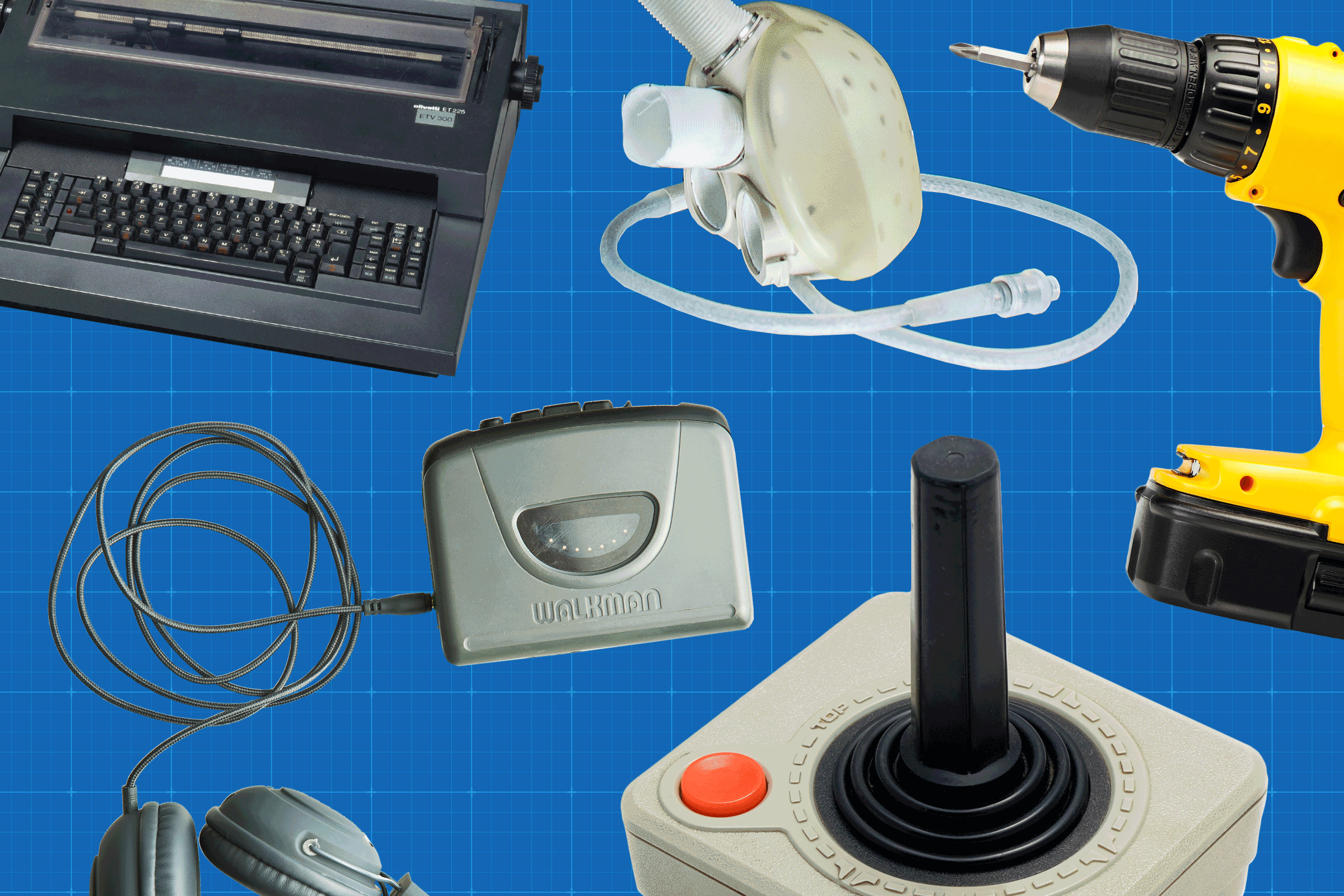
Strokes of genius
Each and every day, there are brilliant minds working behind the scenes to develop inventions and technology that make our lives better, easier, or just plain more fun. Depending on your age, there’s quite possibly never been a time in your life when you didn’t have access to a personal computer or a video game console. Heck, maybe you’ve never known health care without the option of a pacemaker to improve the quality of life for heart patients. If you’re curious about what was invented the year you were born, RS Components compiled a fascinating list, which we’re sharing, at least in part, with you.

1960: Pacemaker
The implantable pacemaker, introduced in 1960 by Wilson Greatbatch, changed the lives of heart patients the world over. The device helps correct abnormal heart rhythms, producing electrical pulses to make the heart beat at a normal rate. According to the American Heart Association, approximately 600,000 people receive pacemakers each year. Greatbatch passed away in 2012, at the age of 92, and he had patents for more than 325 inventions, according to the New York Times. One of his other creations was a solar-powered canoe—quite a change from some of his medical-focused innovations!

1961: Cordless electric drill
If you consider yourself a weekend warrior of home projects, this one is for you. Manufacturer Black + Decker presented the world with the very first cordless electric drill in 1961; its power was originally derived from a nickel-cadmium battery. Later in the decade, Black + Decker was contracted by NASA to develop cordless gadgets specifically for its Gemini program, according to RS Components. Gemini is considered one of NASA’s earliest human spaceflight projects and was named as such because it’s Latin for “twins” and the first Gemini capsule could hold just two people. Clever! Among the first tools Black + Decker developed for Gemini was a zero-impact wrench. Want to know what else happened the year you were born? Check out the most popular books that were published from 1950 through 2000.
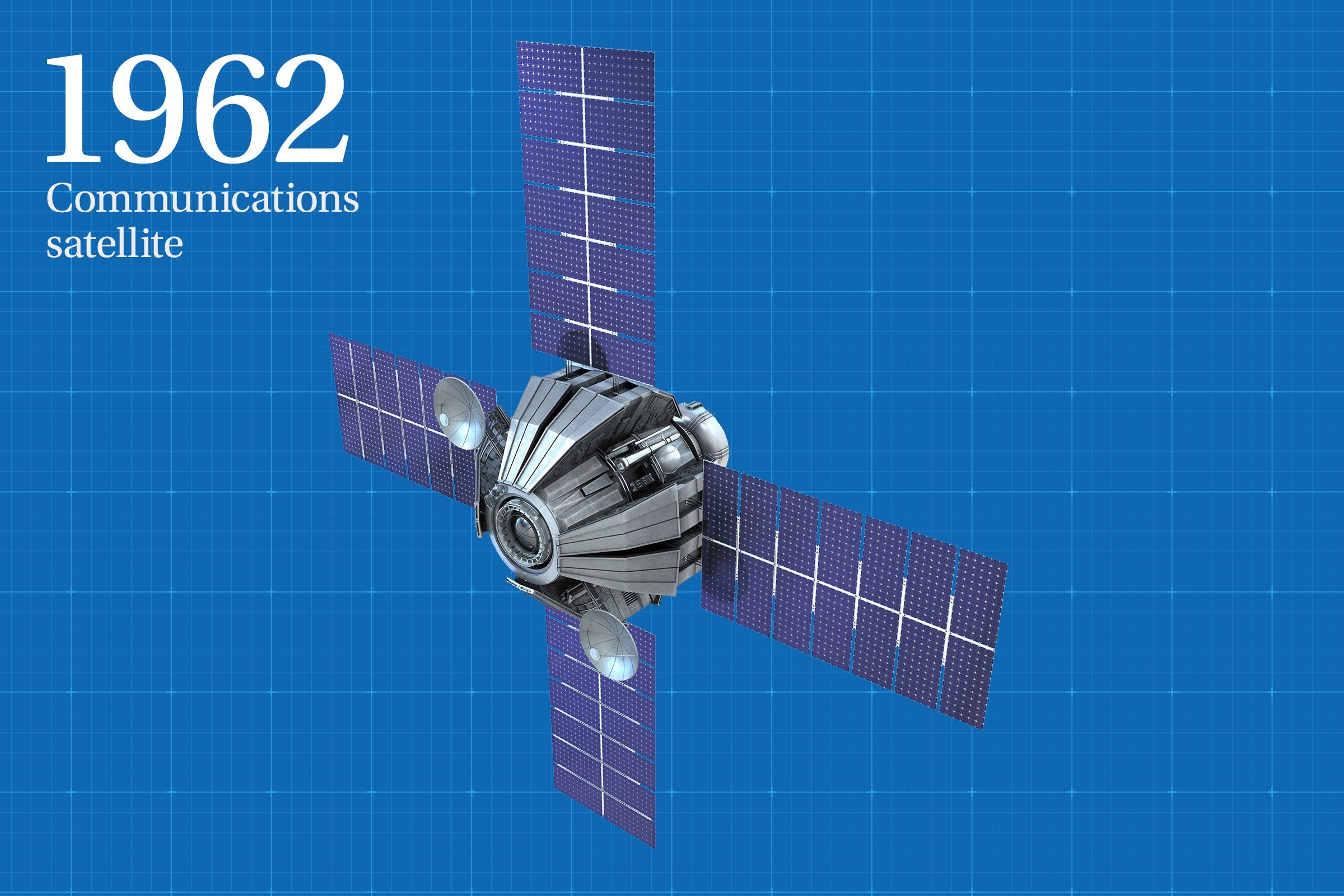
1962: Communications satellite
We rely so heavily on our cell phones and Wi-Fi-enabled devices that it’s almost hard to remember there was actually a time when those things didn’t exist. You can thank the invention of the first communications satellite in 1962 for changing the way we get our information and connect with other people. This beauty was named Telstar, and according to the Smithsonian National Air and Space Museum, AT&T launched it on July 10 of that year. Later in 1962, Telstar would be instrumental in establishing the first transatlantic television transmission between the United States and France. Miss classic television? Here are some iconic series you can still catch on Netflix.
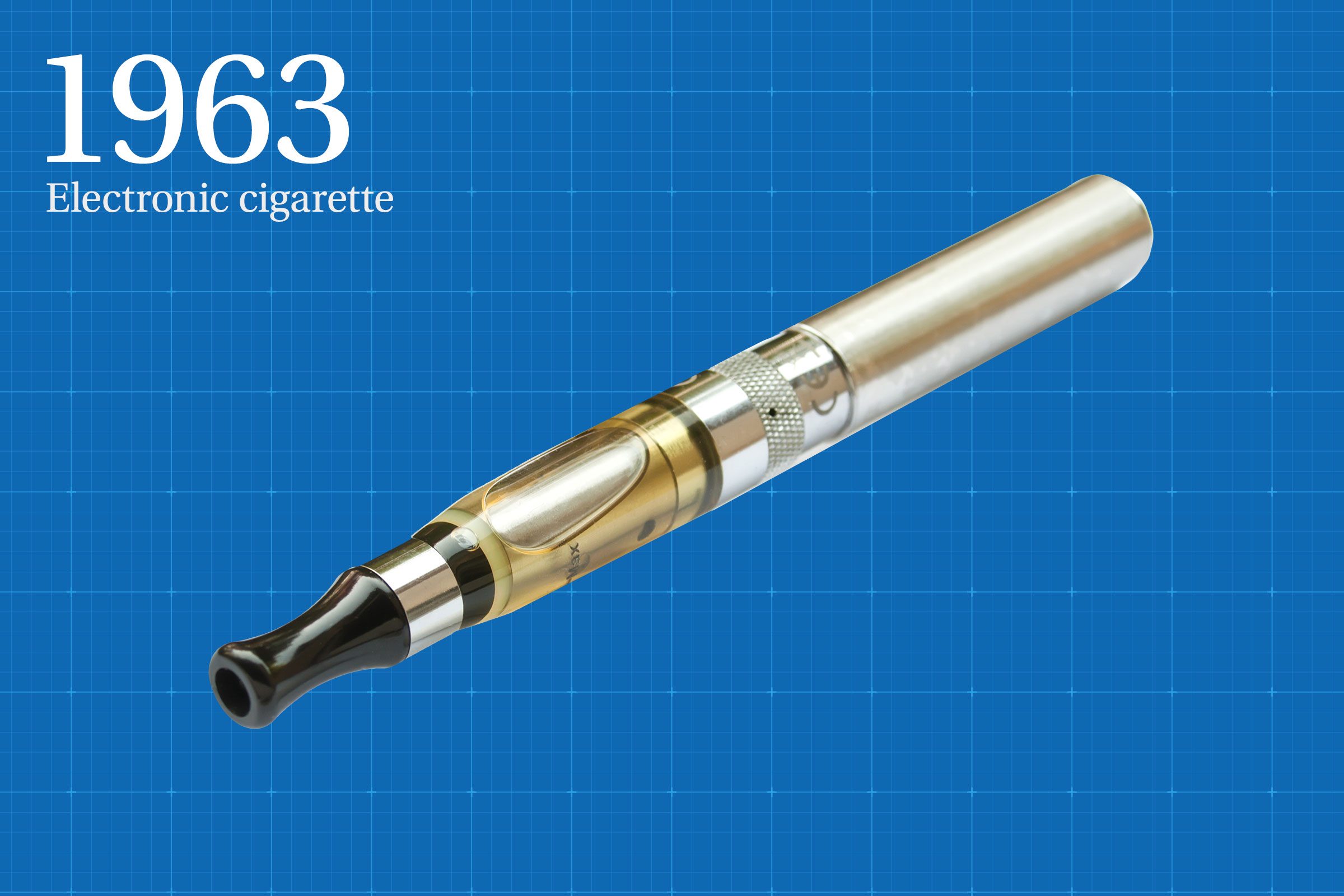
1963: Electronic cigarette
Vaping has garnered a lot of attention in the past several years for a multitude of reasons (none of them very praise-worthy), and its origins can be traced back to 1963 when the first form of an electronic cigarette debuted. Herbert A. Gilbert is the name linked with the invention, according to RS Components, though he didn’t receive a patent for it until 1965. While vaping is a billion-dollar industry now, Gilbert wasn’t so sure his version of the e-cigarette (which some sources say didn’t contain nicotine) would appeal to consumers. For that reason, he chose not to make a big commercial push on the product.
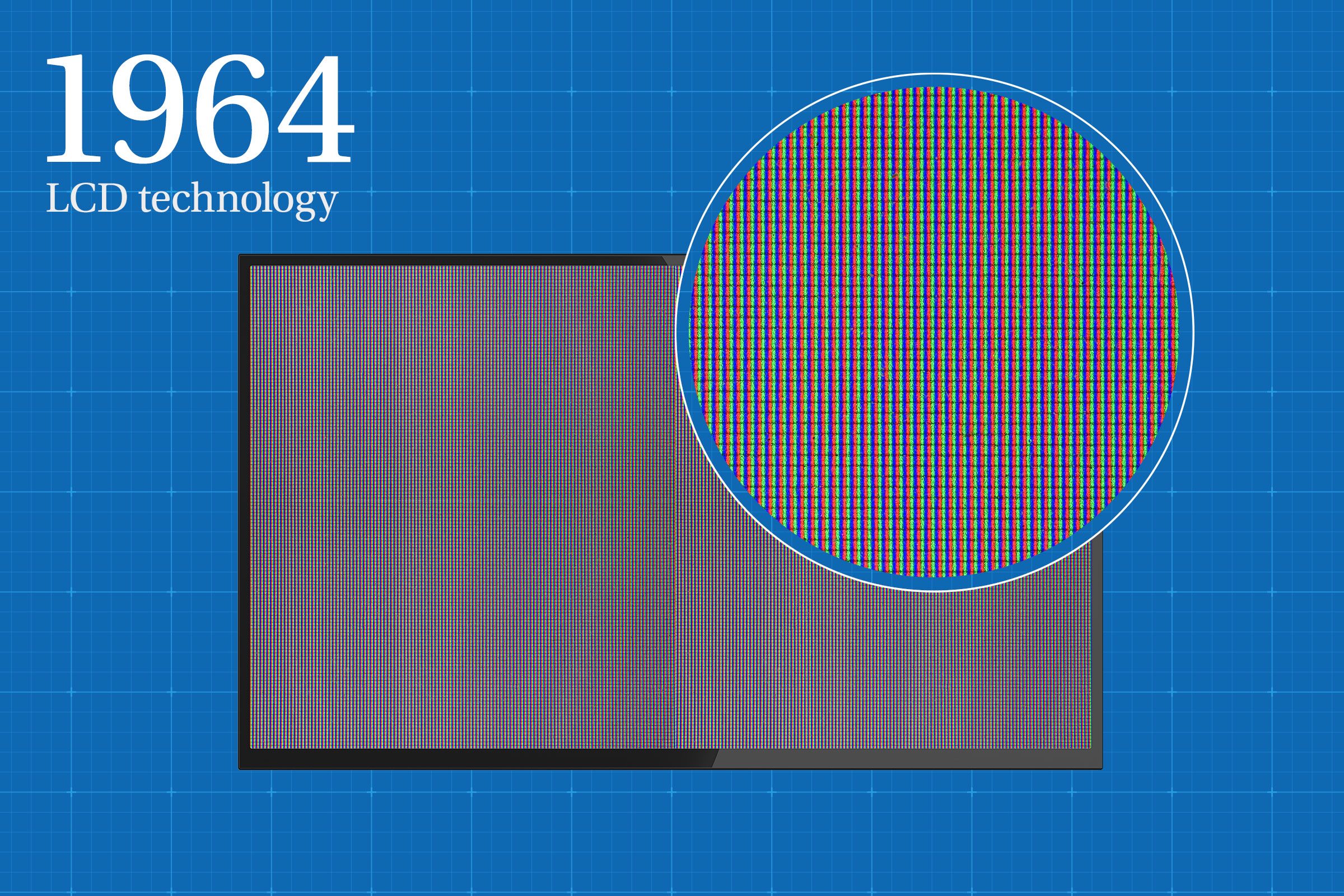
1964: LCD technology
The next time you’re kicking back and binge-watching Netflix on your flat-screen TV with its amazing picture display, give a shout-out to the year 1964. Why, you ask? Because that’s when the very first Liquid Crystal Display (LCD) was presented. George H. Heilmeier is credited as the man behind the science and was inducted into the National Inventors Hall of Fame as such. Keep in mind that it would be four years before RCA Laboratories would show off this exciting new display and even longer before the technology would be used in our homes, according to Circuits Today. But we owe it to Heilmeier for his ingenuity.

1965: Kevlar
Hey, road trippers, you’ll appreciate 1965’s invention more than most. Kevlar, the super-strong synthetic material used in car tires, was produced by Stephanie Kwolek, a chemist working for DuPont. But the material is used for a great many things, not just tires. You’ll also find the heat-resistant stuff in brake pads, rugby boots, luggage, and workout equipment like the medicine ball. It’s so versatile that Kevlar is even used in PPE items like gloves and sleeves to protect mechanics from injury, as well as in bulletproof vests. It’s safe to say our everyday life is affected by Kwolek’s invention, often without us even realizing it. Here’s why your car’s tires are its most important safety feature.
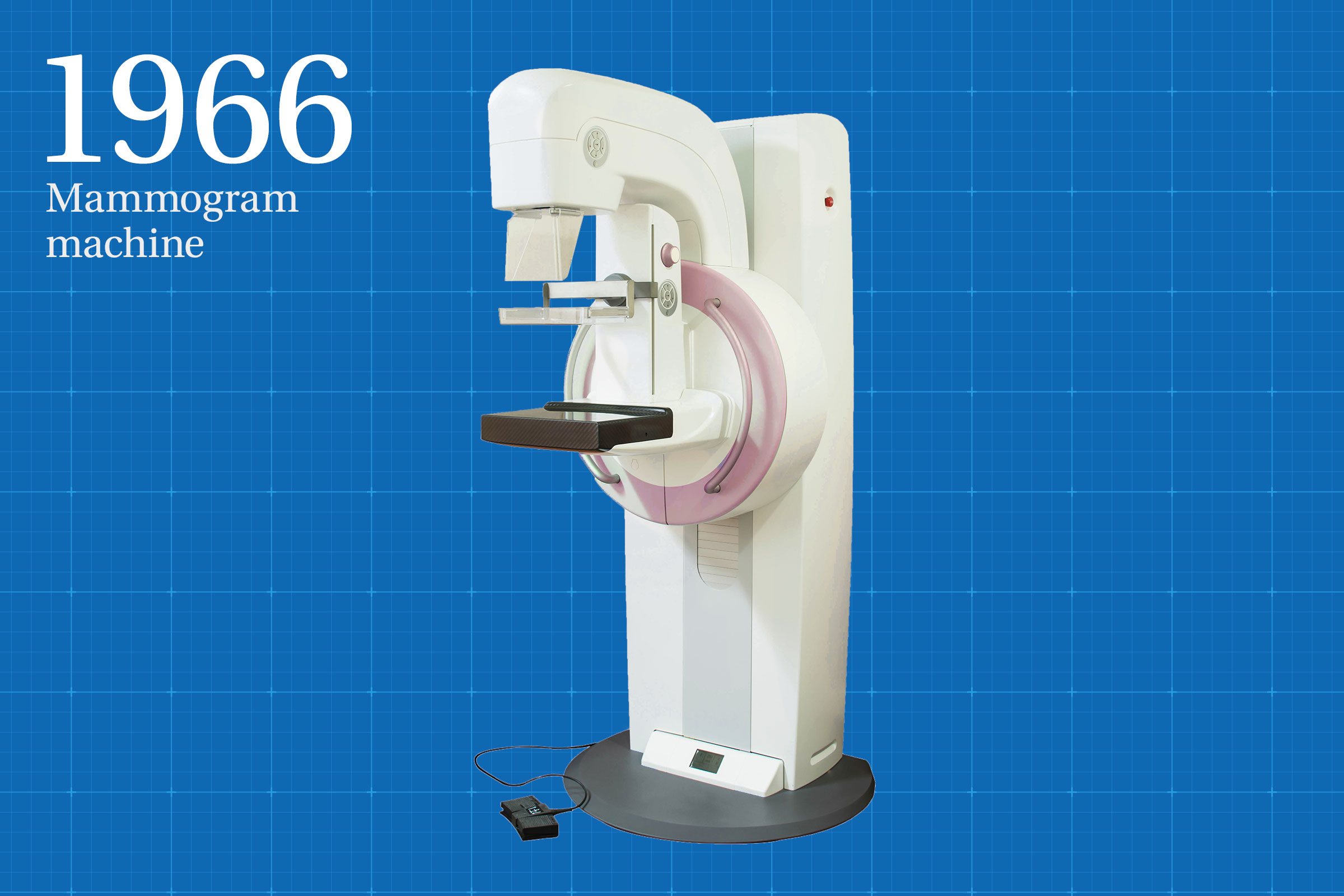
1966: Mammogram machine
The fight to find a cure for breast cancer is a longstanding one, but in 1966, the first mammogram machine was introduced, proving a major breakthrough. The machine closely looks at breast tissue to find calcifications or masses to detect cancer earlier rather than later. According to the American Cancer Society, beginning at age 40, women should consider getting an annual mammogram, while women 45 to 54 should take that yearly recommendation more strongly. Female patients over the age of 55 can switch to scheduling a mammogram every other year, if they choose. It is estimated that more than half a million breast cancer–related deaths have been averted in the last three decades alone, in part due to the invention of the mammogram machine’s capabilities in early detection, which lends itself to the start of earlier treatment. When it comes to science, not every invention is intentional. Case in point: these 10 accidental discoveries that changed the world.
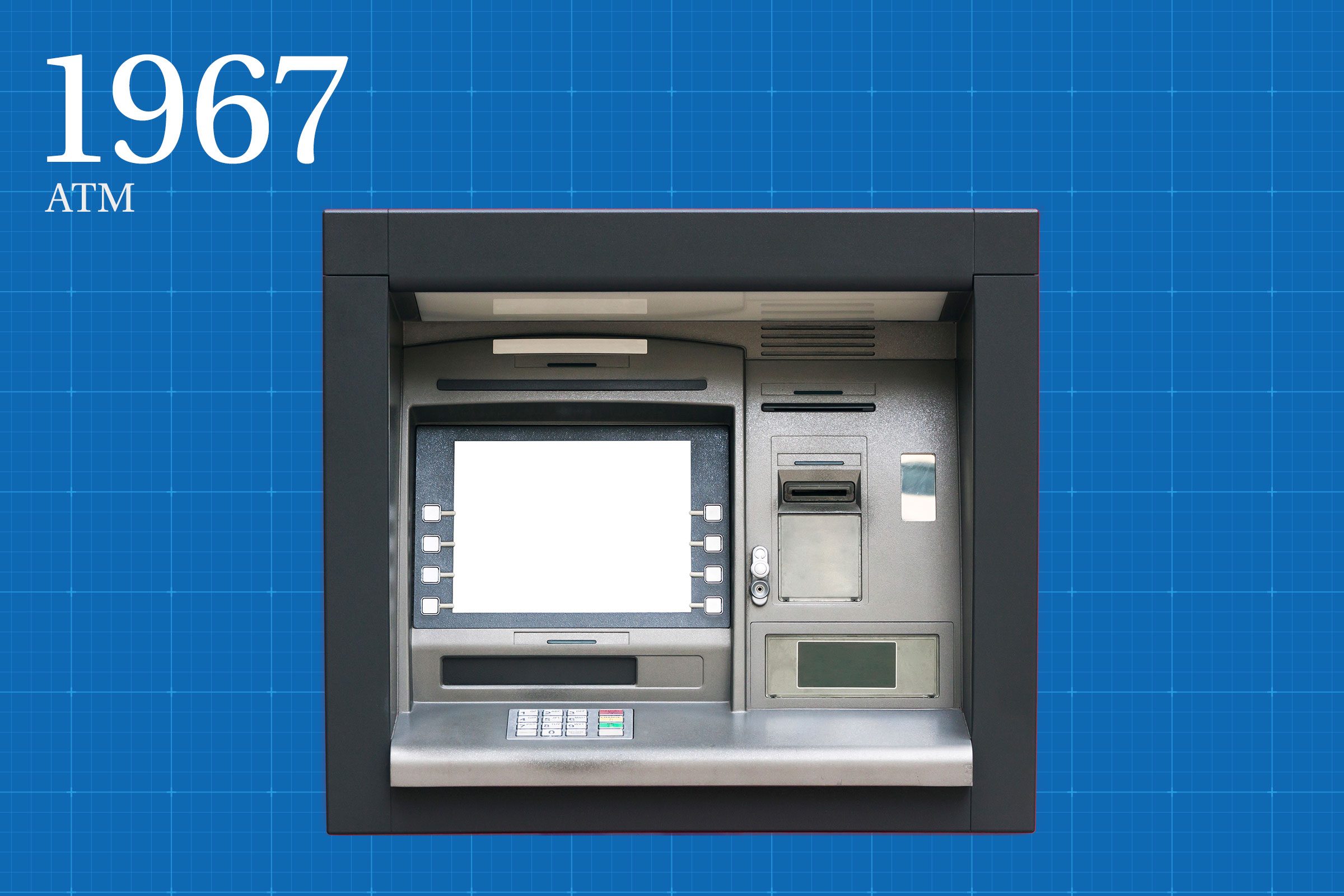
1967: ATM
Remember the days when you actually had to go into the bank and fill out paper slips to either deposit or withdraw cash from your account? Sure, sometimes there is still a reason to walk through those bank doors and speak to a real, live human being, but 1967 introduced the very first Automated Teller Machine (ATM), and, boy, have our lives become easier for it. It was Barclays Bank in London’s Enfield neighborhood that received the debut ATM, created by John Shepherd-Barron. According to Time, Shepherd-Barron came up with the idea while taking a bath, proving self-care isn’t all about relaxation—it can produce a life-changing innovation, too. Still love to deal with real humans when handling your money? Find out the 20 secrets your bank teller won’t tell you.

1968: The Jacuzzi
Speaking of self-care, 1968 said hello to the Jacuzzi. Appropriately named after its inventor, Roy Jacuzzi, the first of its kind basically looked like a bathtub with an internal whirlpool system to make the water bubble up. Jacuzzi came up with the invention as a response to the growing number of people who were taking up personal exercise regimens. While the warm, whirling water can help alleviate a number of aches and pains, there are a few guidelines for Jacuzzi and hot tub use that are important to remember. For starters, the CDC doesn’t recommend pregnant women use these tubs and also advises against drinking alcohol before getting in one. They’re also a no-no for children under the age of 5. Love to relax? These are some of the most luxurious spas in the world.

1969: The Concorde
With a max speed that’s twice that of the speed of sound, the world was pretty impressed by the Concorde, which started test flights in 1969. However, it wasn’t until 1976 that this type of aircraft first started carrying commercial passengers, according to History.com. The Concorde took its last commercial flight in 2003 from New York’s JFK airport to London’s Heathrow airport. If you think air travel is expensive now, consider this: That last flight, operated by British Airways, cost about $9,000 per ticket. Rumor has it that a couple from Ohio purchased two tickets on eBay for $60,000, just to have the experience. Expand your aviation knowledge with 50 airplane facts you’ve always been curious about.
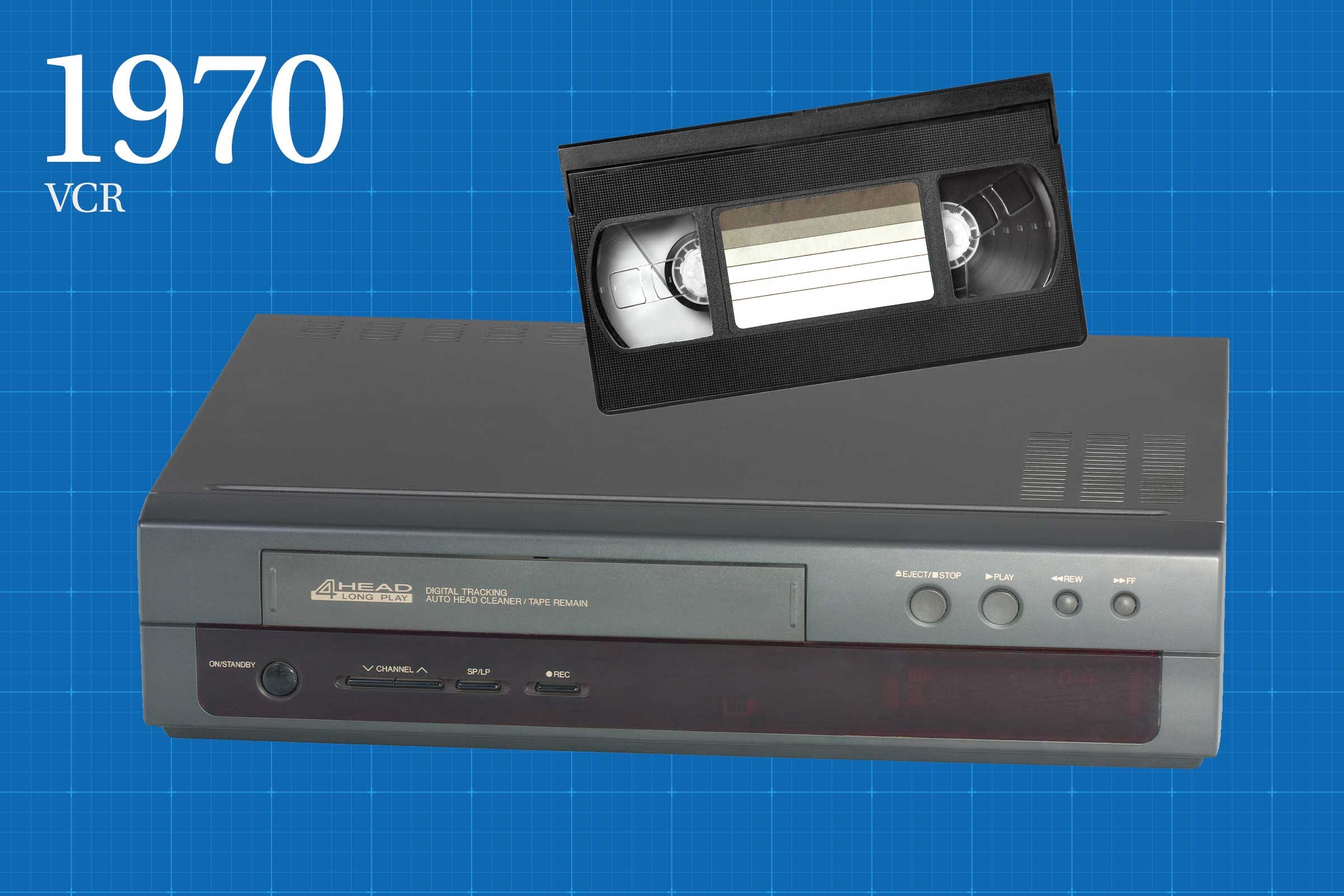
1970: VCR
By 1970, there was a slew of popular television shows like The Mary Tyler Moore Show, The Brady Bunch, and Bonanza. If you knew you weren’t going to be home to catch the latest episode, wouldn’t it be great to have a device that could record it for you, so you could watch it later? Introducing the first Video Cassette Recorder (VCR). The first iterations were apparently very noisy and bulky, so they weren’t a true commercial success until the technology was streamlined later on. In fact, we wouldn’t get the VHS (the VCR cassette tape as we know it) in the United States until 1977. Ready to scrap your ancient VCR, along with a few other items collecting dust in your attic? Here’s how to donate practically anything.

1971: Email
Today, we use email for just about everything—for work, to stay in touch with loved ones, and to receive information from retailers, businesses, banks, and the like. But the very first email was sent in 1971 by Ray Tomlinson, long before the form of communication became common practice. Tomlinson, a computer programmer, crafted the email on what was known as the ARPANET system, and the invention put him in the Internet Hall of Fame. (Yes, such a thing really exists!) He’s also the guy who chose the @ symbol to be used when directing an email to a specific address. Of course, we generally expect innovations to come from adults, but these 14 cool things were actually invented by kids.
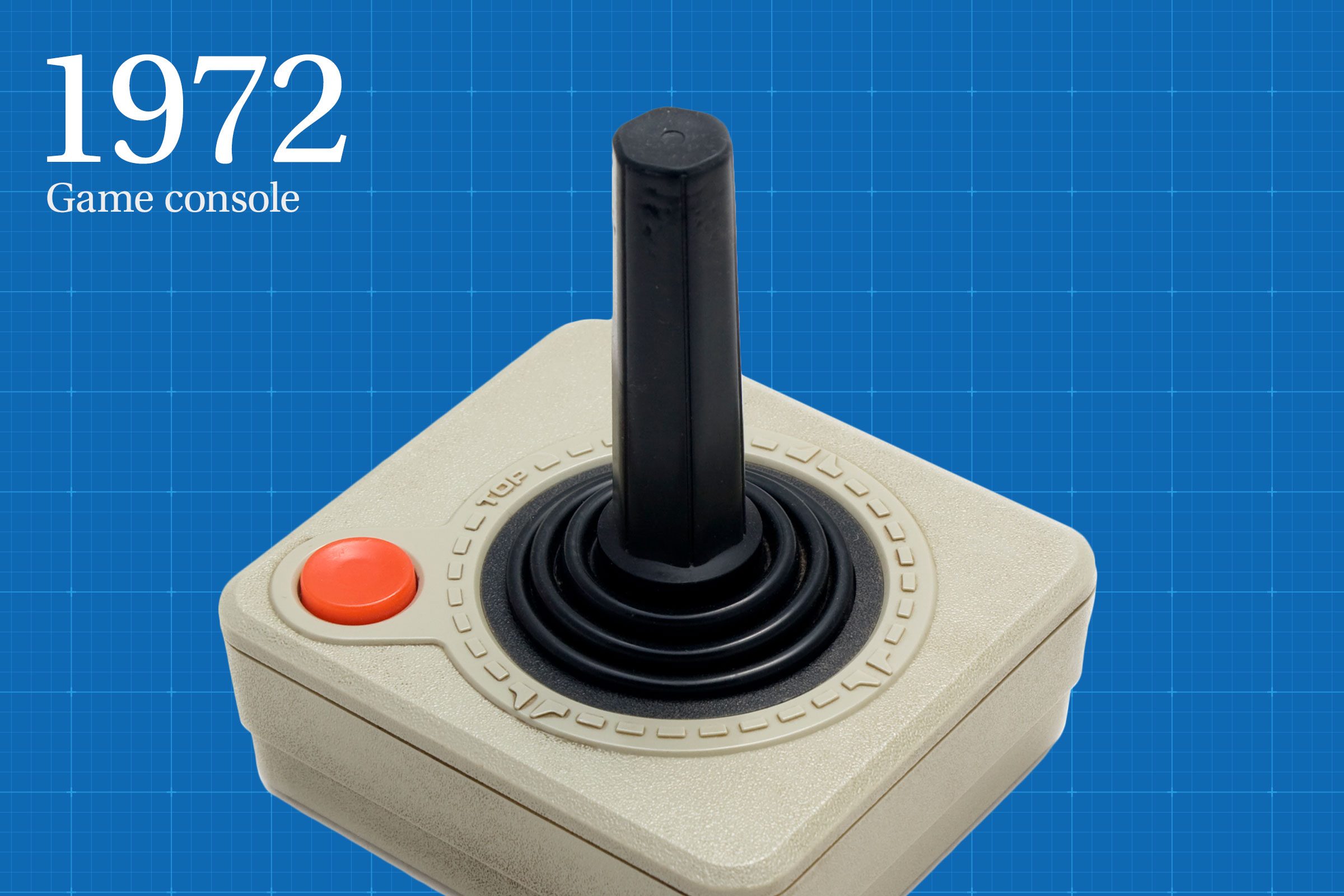
1972: Game console
Gamers, rejoice! This year welcomed the very first gaming console with the introduction of Atari Pong and Magnavox Odyssey. Pong was, quite simply, a two-dimensional game that kind of looked like ping-pong (hence, the name). In order to win, you needed to earn 11 points before your opponent. According to Mental Floss, the Odyssey was packaged with 12 games that didn’t have sound or color. That system cost around $100, and it was discontinued just three years later in 1975. Hey, video games had to start somewhere, and Pong, at least, is still beloved by old-school gamers who appreciate its vintage appeal. Do you know these 15 fascinating facts about your favorite video games?
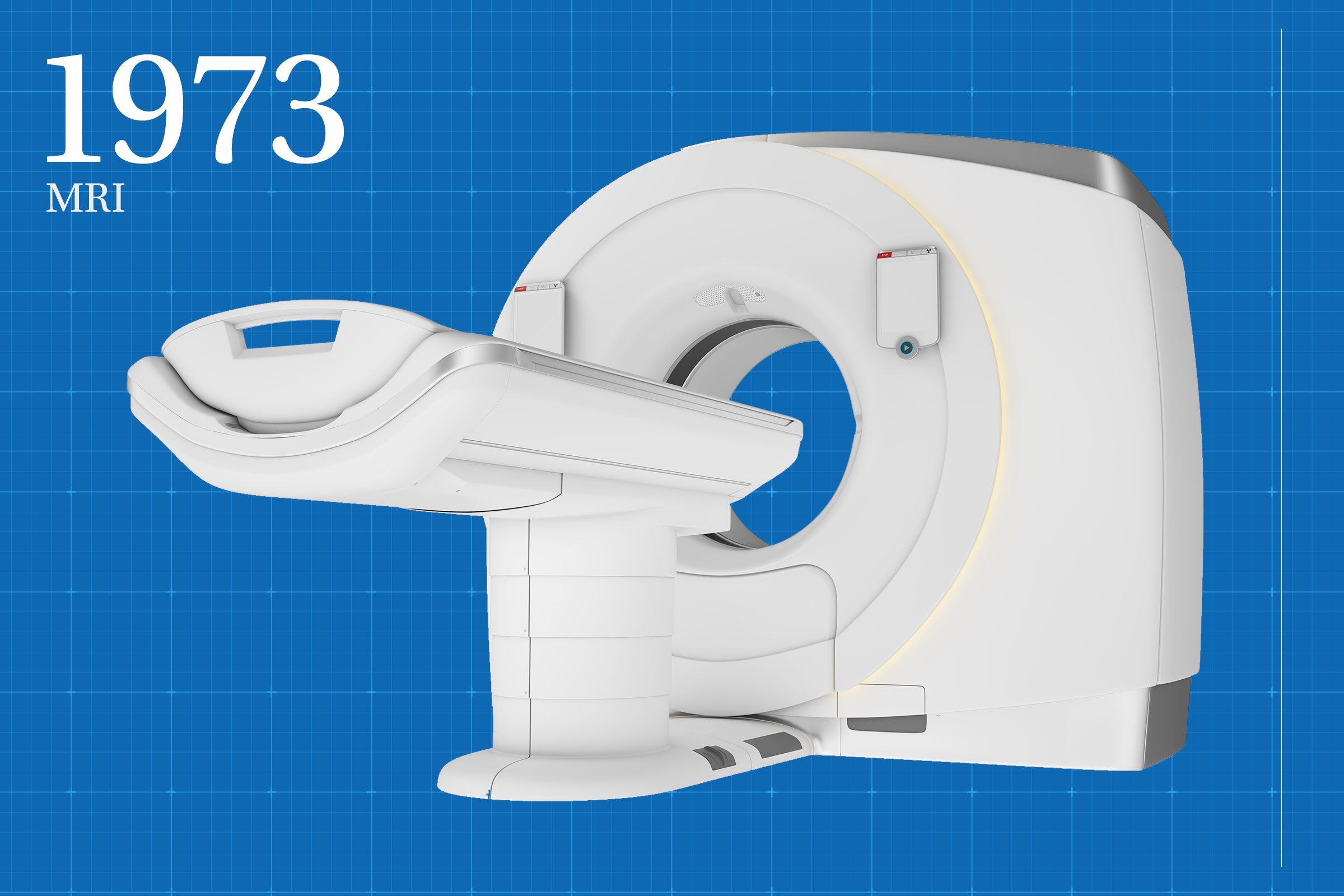
1973: MRI
Medical patients might not necessarily love the idea of being scheduled for an MRI (Magnetic Resonance Imaging), particularly if they feel claustrophobic in small, enclosed spaces, but there’s no denying the 1973 invention of the machine was a huge coup for the health care industry. Large magnet and radio waves are used to closely look at the inside of the body, with MRIs used for a slew of different conditions and, according to MedlinePlus, extremely beneficial when looking at the brain and spinal cord. Approximately 40 million MRIs are performed in the United States each year.

1974: Post-it Notes
It’s hard staying organized with so much to do, which is why we are truly appreciative of one Spencer Silver, the man responsible for the invention of the Post-it Note in 1975. Silver worked as a chemist for 3M and was inspired to create the movable adhesive note after a colleague was on the hunt for a bookmark that could stick to paper. “It was always a self-advertising product because customers would put the notes on documents they sent to others, arousing the recipient’s curiosity,” says Art Fry, the very coworker who got Silver thinking, on 3M’s website. “They would look at it, peel it off and play with it, and then go out and buy a pad for themselves.”
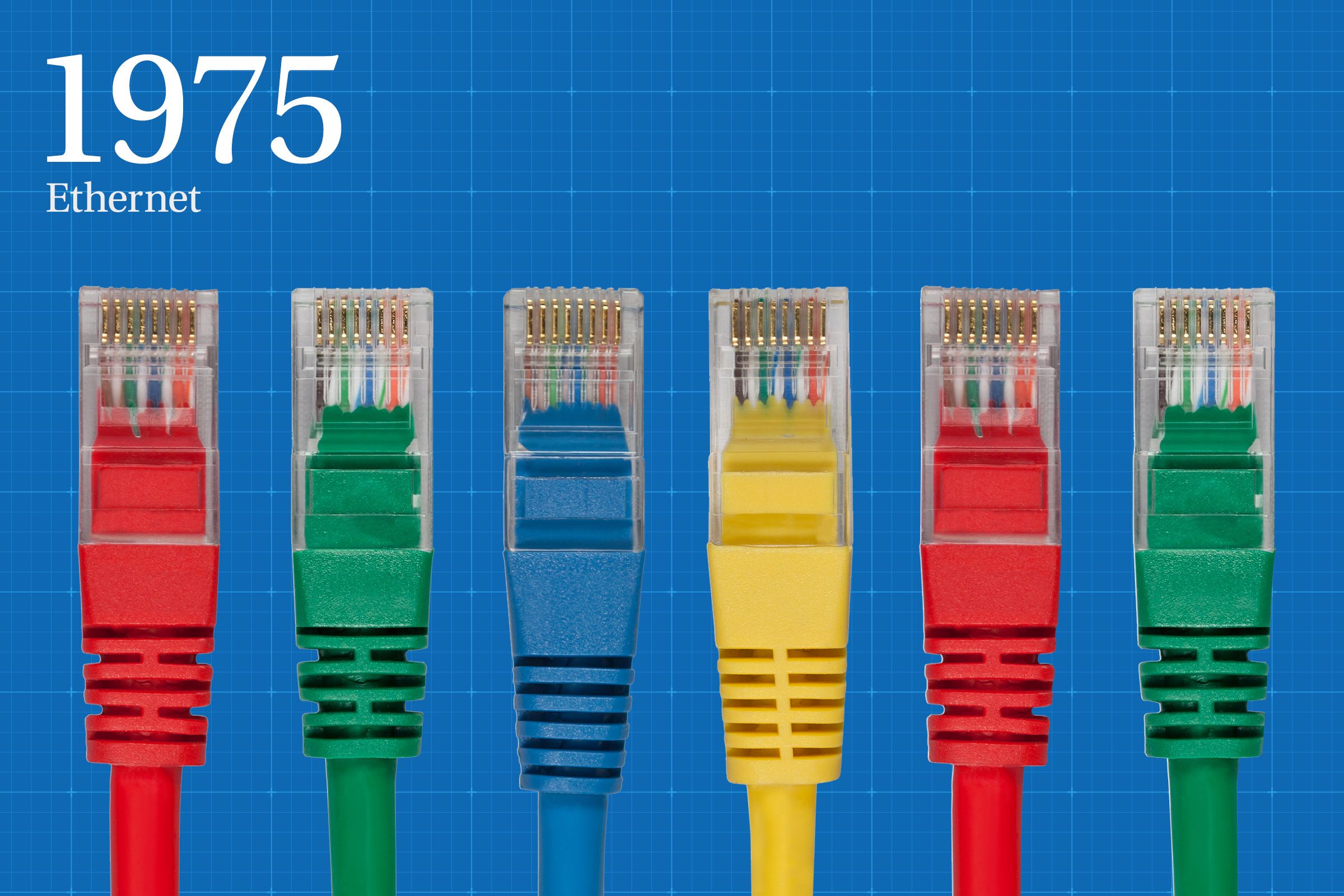
1975: Ethernet
We wouldn’t have the Internet as we know it today without the invention of the Ethernet, which was born in 1975. The technology allows the devices attached to local wired networks to communicate with one another through a LAN (Local Area Network) network. Robert Metcalfe, who worked for Xerox at the time, and his assistant David Boggs are considered the inventors of the system. Metcalfe was inducted into the National Inventors Hall of Fame in 2007. The hall of fame asserts that more than a quarter-billion Ethernet switch ports are shipped around the globe each year.
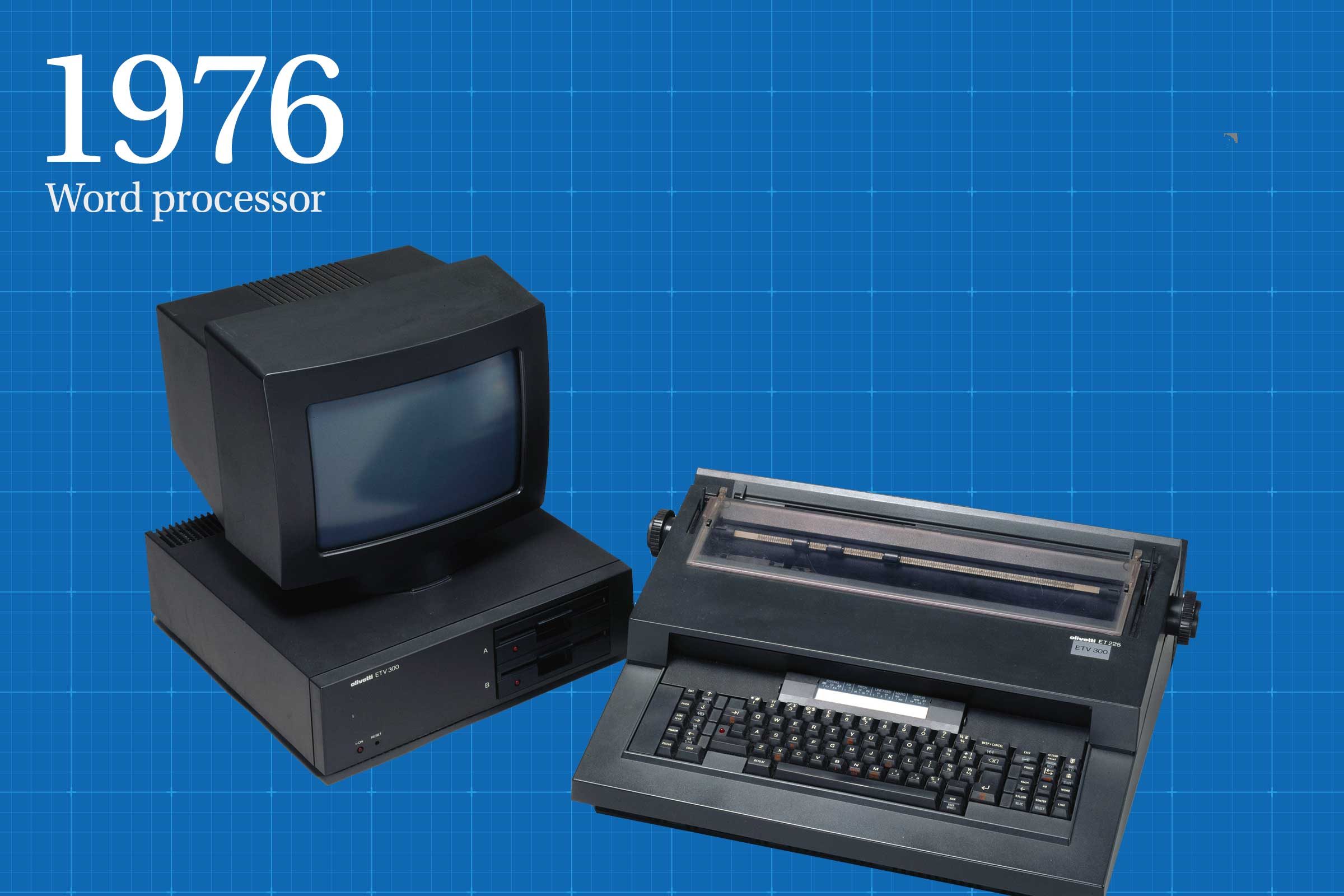
1976: Word processor
We’re inching closer and closer to the arrival of the personal home computer as we know it. In 1976, the first word processor, which was adorably called Electric Pencil, was introduced to the world. Michael Shrayer is credited with the original’s invention. The version he crafted was suitable for a computer type called Altair, but soon Shrayer was receiving requests for alternatives that could be used on other types of computers. By 1980, 78 different versions of Electric Pencil had been created. We’ve come a long way since the word processor days, and now, we have to be vigilant in protecting ourselves from computer hackers and phishing scams. Don’t miss the 12 red flags that someone may be spying on your computer.
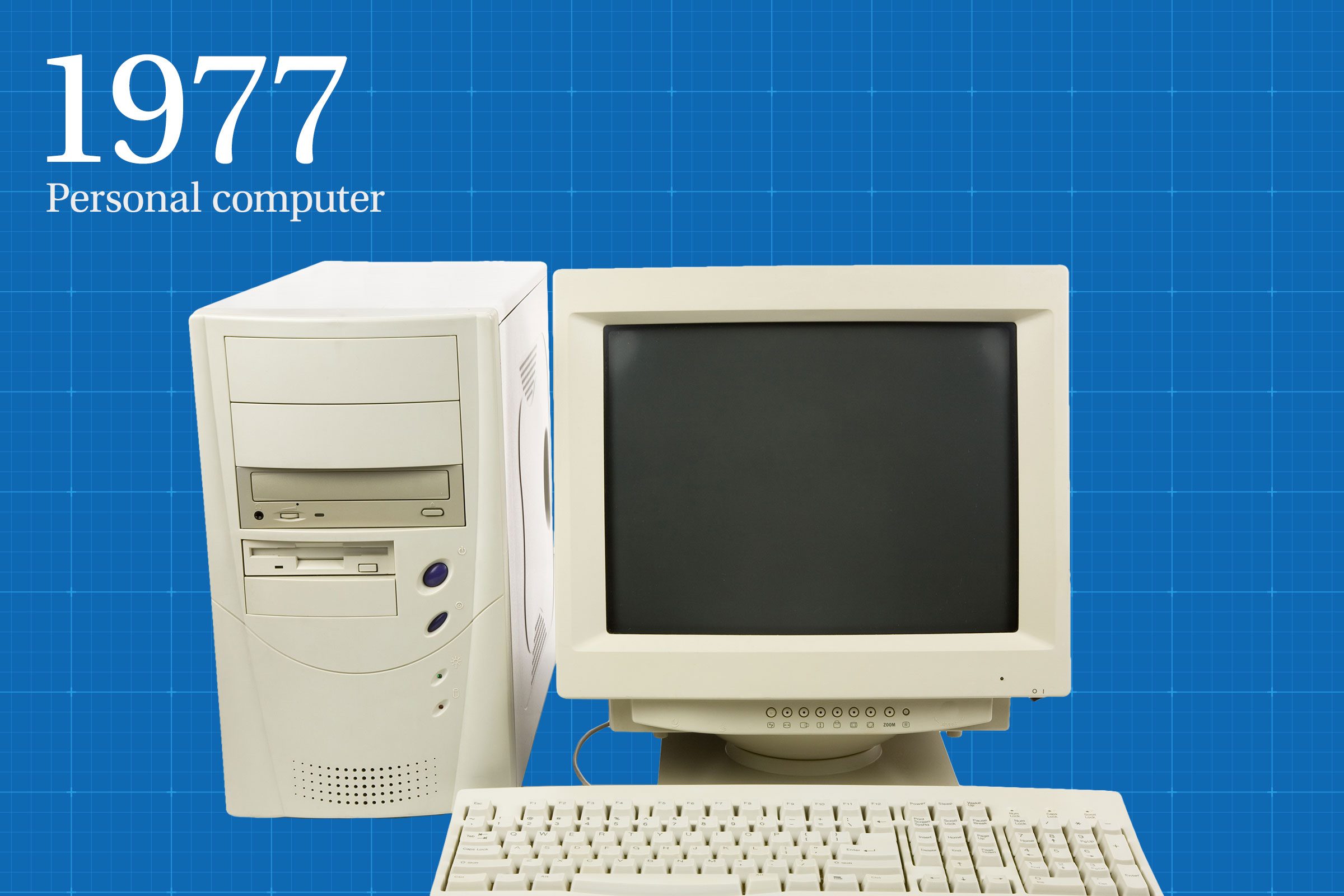
1977: Personal computer
And here we are at the arrival of the first personal computer in 1977. Three were released—the Apple II, the Commodore PET, and the TRS-80 from Radio Shack. According to the Computer History Museum, the Apple II was sold between 1977 and 1993, giving it credit as one of the “longest-lived lines of personal computers.” The site says millions were sold during that 16-year stretch. The Apple II was an all-in-one machine, packaged with a logic board, switching power supply, keyboard, case, game paddles, and a copy of the game Breakout. By contrast, the Commodore PET was discontinued in 1982, spending just five years on the market.
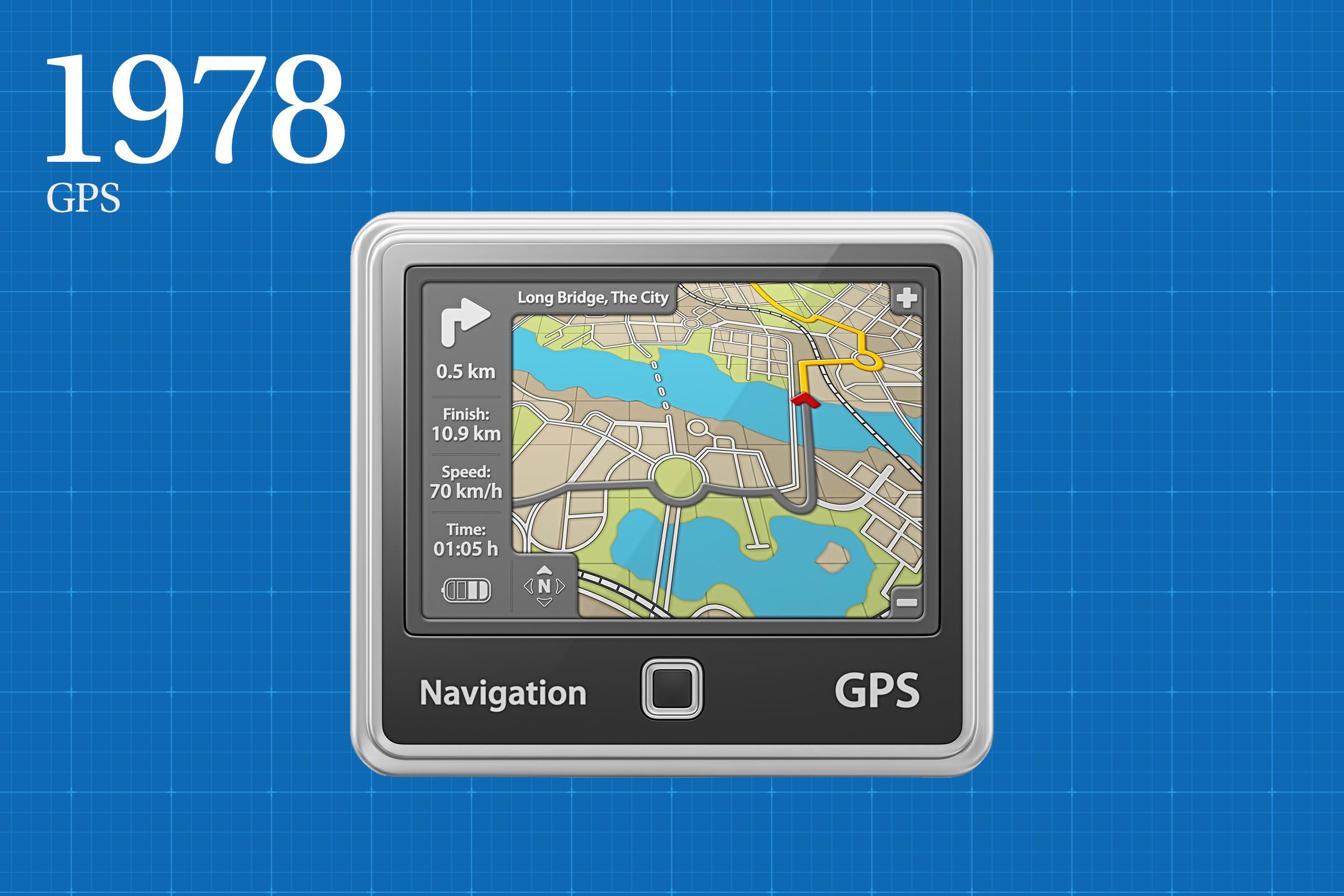
1978: GPS
For the directionally challenged, our next invention is a biggie. GPS launched in 1978, thanks to a brand-new satellite in the Navstar Global Positioning System. However, civilians not attached to the military weren’t able to access the GPS (at least not in an unscrambled way) until the year 2000. Of course, now we have many different mobile apps and other assorted techy ways to get directions because of this invention. According to Science Focus, the credit for GPS was given to Dr. Ivan Getting, a physicist, and Colonel Bradford Parkinson, an engineer, in 2003, but there were many others involved in bringing the technology to fruition.
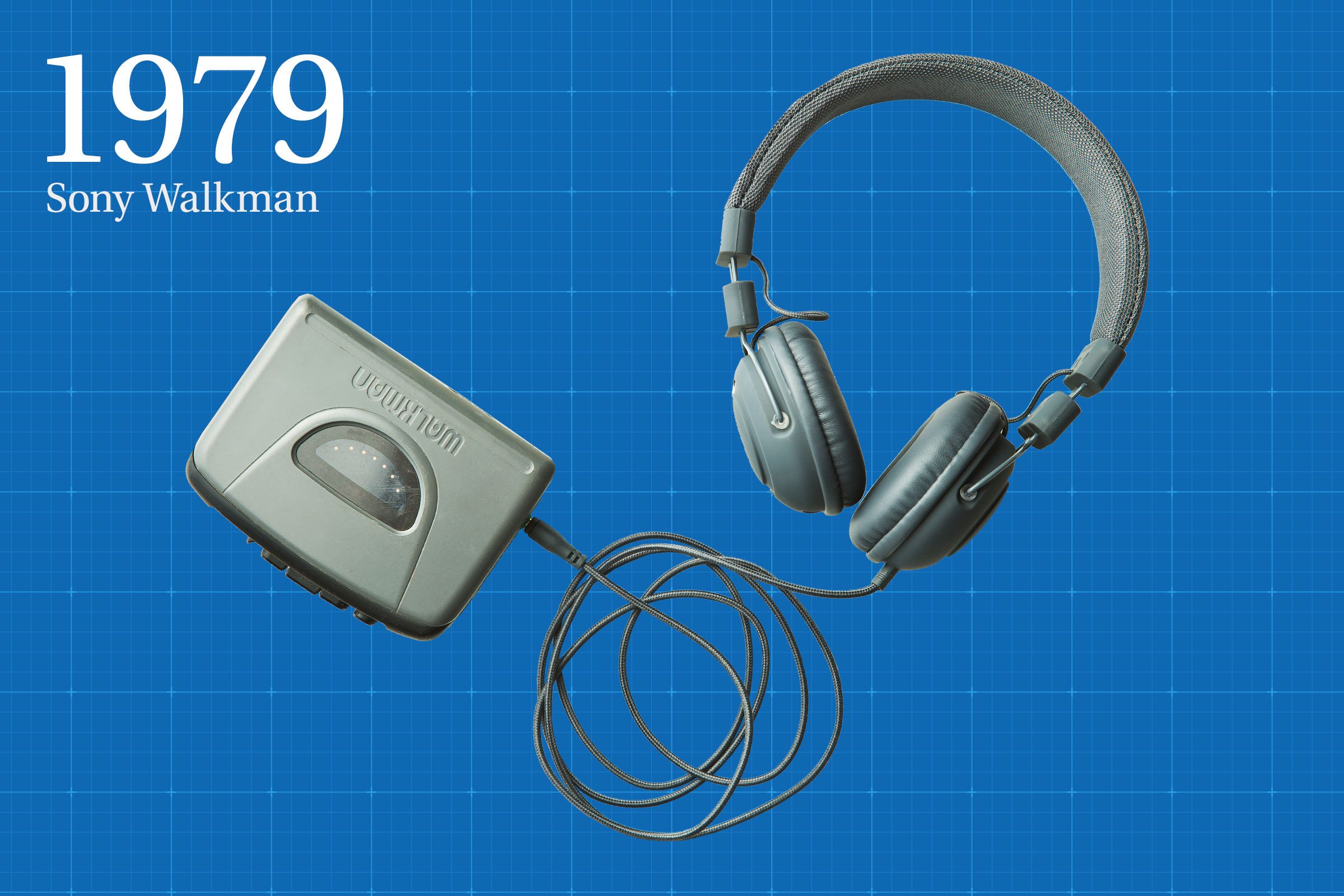
1979: Sony Walkman
Long before there were iPods, iPhones, and even MP3 players, there was the Sony Walkman, a personal cassette player you could plug a pair of headphones into and use to bring your favorite tunes absolutely anywhere. This was introduced in 1979, closing out a decade of fabulous inventions. The Walkman used two AA batteries for power and cost around $150. That’s a pretty steep price tag for something that would later be replaced by the Discman (a portable, personal CD player) and then the MP3 player. According to Business Insider, it was the Walkman that led to cassettes finally outselling vinyl records by 1983.
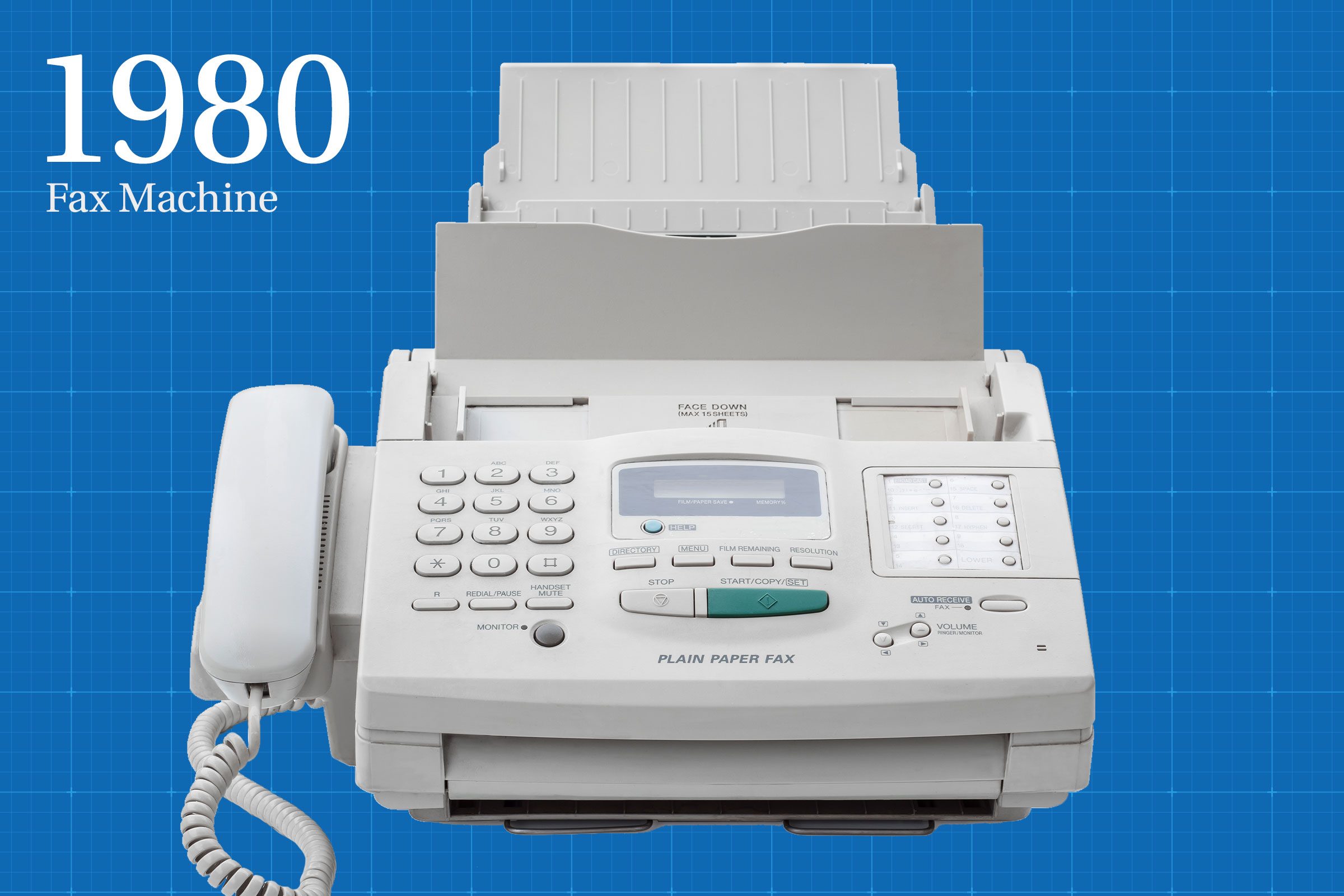
1980: Fax machine
Now considered an office relic, the fax machine was the next modern gadget that aided in making business communication a heck of a lot easier in 1980. This updated version of the fax originated in Japan that year, but technically, a primitive version was introduced by Alexander Bain in 1843. According to eFax, the office fax machine cost a whopping $20,000 in 1982. Yikes! Today you’ll be hard-pressed to find the ’80s incarnation of the fax machine, since we generally use the Internet for speedy (and easy) forms of communication. Find out the other everyday products Gen Z will never use in their lifetime.
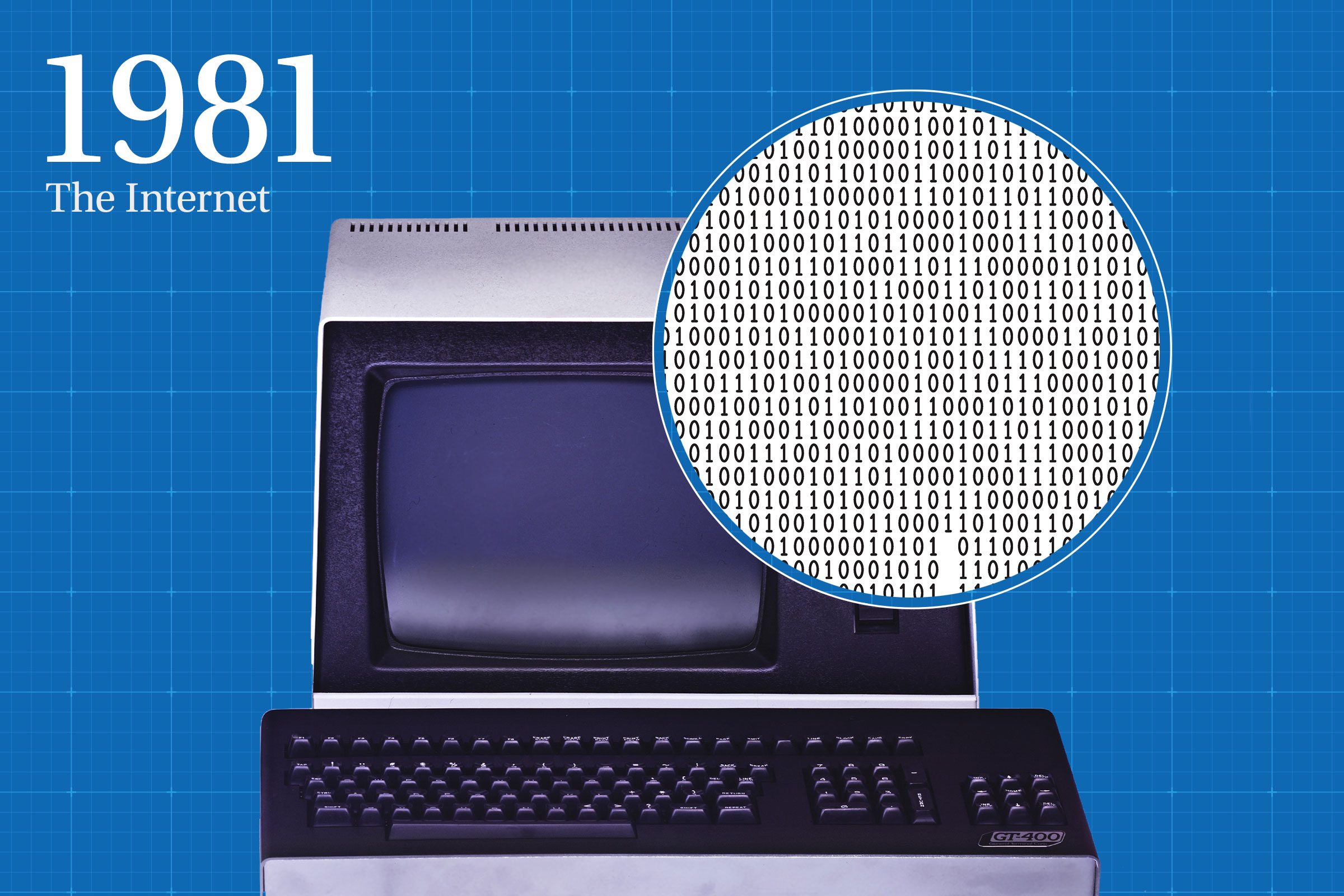
1981: The Internet
Finally, it has arrived—let’s hear it for the Internet! Prior to 1981, a version of the Internet was available only to the military, but during this year, it became more accessible to folks in the fields of academia and science. This was thanks in part to a grant from the National Science Foundation that helped provide networking services to computer scientists at universities, according to Live Science. Fun fact: 1981 was also the year that IBM’s PC was launched, so it was a big one in computer history.
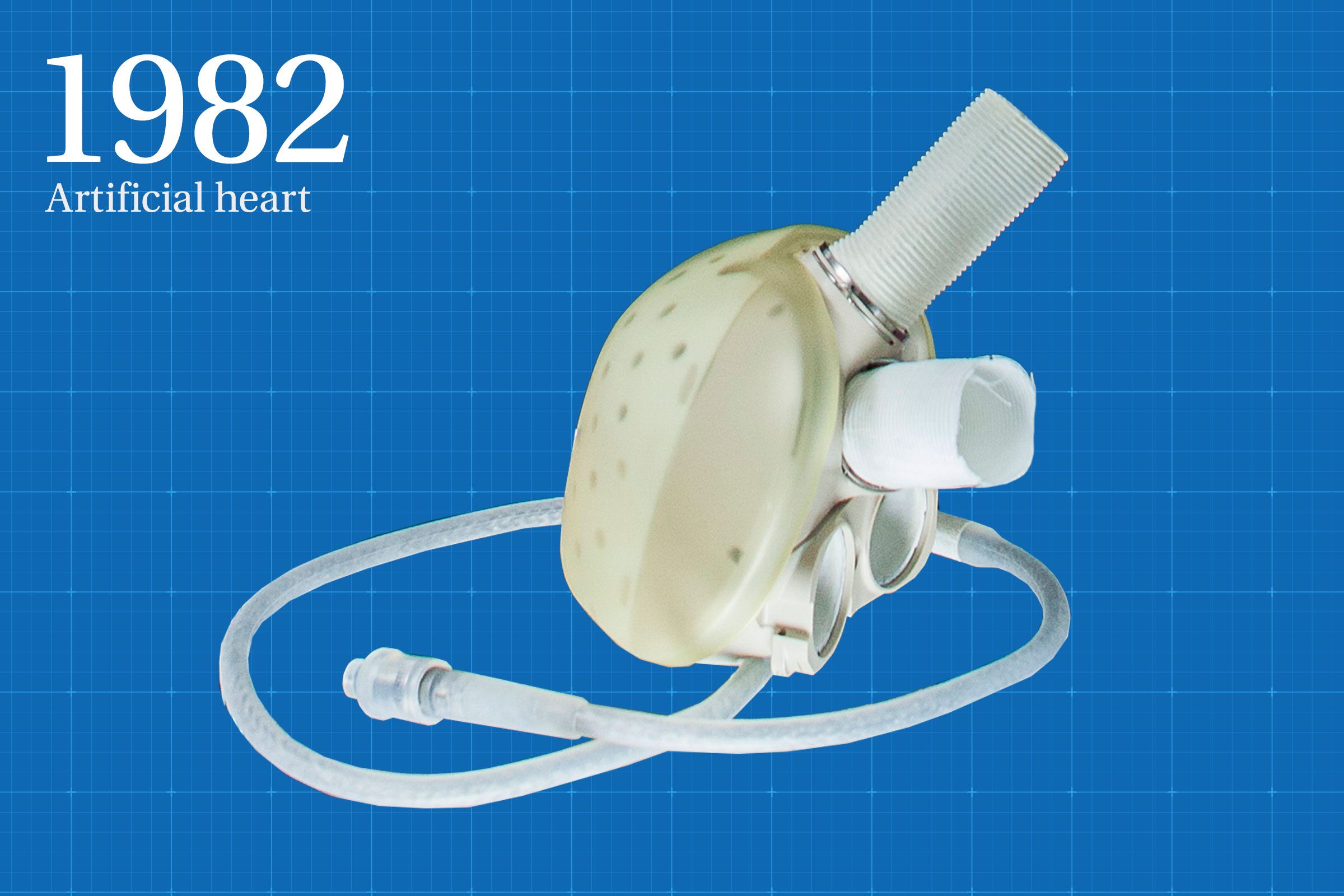
1982: Artificial heart
Let’s take a break from computer-related victories to pay homage to the very first artificial heart implantation in 1982. The surgery was conducted by Dr. William DeVries, a cardiothoracic surgeon, at the University of Utah hospital. The recipient of the artificial heart was Dr. Barney Clark, a dentist from Seattle, who lived an additional 112 days thanks to the surgery. According to University of Utah Health, Clark had to remain connected to a 400-pound air compressor that worked in conjunction with the heart. The heart even had its own name: Jarvik-7. Of course, men aren’t the only ones who’ve developed amazing things. Check out these 16 things you never knew were invented by women.
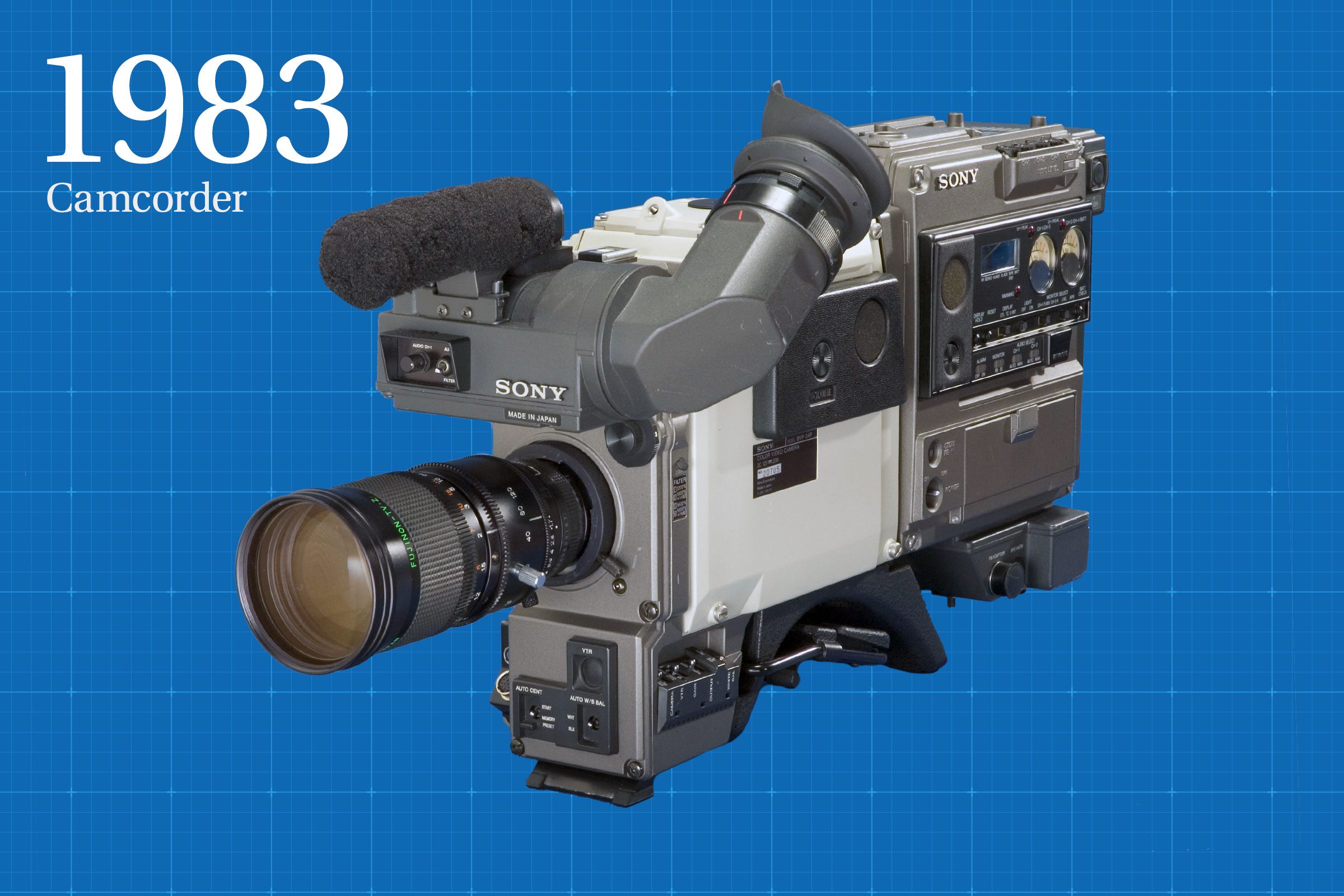
1983: Camcorder
Home movies got a major upgrade in 1983 when the consumer camcorder hit the market. Sony offered up the Betamovie 100-P using Betamax tapes, only to be upstaged by similar camcorders that used the more versatile VHS tapes. A bummer for Sony but a boon to amateur filmmakers everywhere. It’s also the year we got the iconic Swatch Watch (which basically symbolizes the ’80s in timepiece form), as well as the year the Chicken McNugget arrived at McDonald’s, according to Mental Floss, though it had actually been invented years earlier before being added to the chain’s menu.

1984: Mobile phone
In today’s world, many of us think our mobile phones are as necessary as the air we breathe. We use them for everything, particularly since the advent of smartphones. In 1984, the first mobile phone was introduced, and it was, of course, enormous in size compared to the options we have today. According to Mashable, the DynaTAC 8000X cost close to $4,000 and was produced by Motorola. It also allegedly could only be used for 30 minutes at a time because of poor battery life. Later that year, the first commercial cellular service launched in the United States. Make your life easier with these 30 cell phone hacks you’ll wonder how you ever lived without.
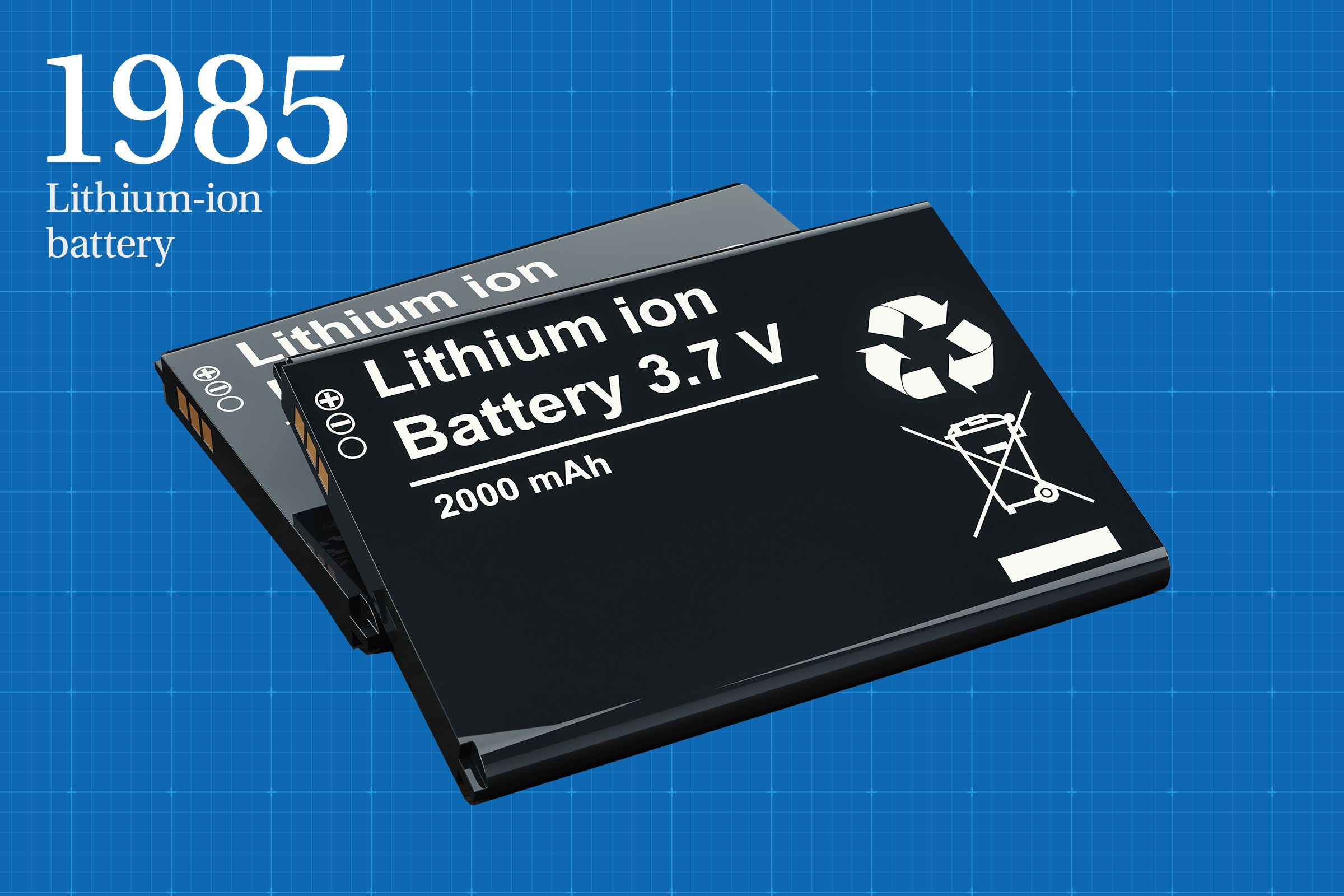
1985: Lithium-ion battery
There are a lot of modern inventions we take for granted because we forget that just a short time ago, they didn’t exist. Case in point: the lithium-ion battery. These are the rechargeable batteries that power our laptops, cell phones, electric cars, and so many other items that make our daily lives easier. While John B. Goodenough and M. Stanley Whittingham are credited with the battery’s development, it was one Akira Yoshino who brought the first commercialized lithium-ion battery to the masses. All three men were awarded the Nobel Prize in Chemistry in 2019 for their stellar work on the invention, according to Science Daily. Speaking of batteries, here is the real reason why you don’t see B batteries in your day-to-day life.

1986: Electronic mailing list
Your robust spam folder owes its contents, in part, to the automated mailing list, which was first introduced in 1986. Specifically, we’re talking about LISTSERV, which was the creation of Eric Thomas, who was still an undergraduate student in Paris at the time. It was the very first email list management program. When you consider the volume of marketing emails most businesses send out today, this really changed the game for a lot of companies. Today, Thomas still works in the biz, continuing to develop email list technology, according to his company, L-Soft. FYI, this is what happens when you respond to spam emails.
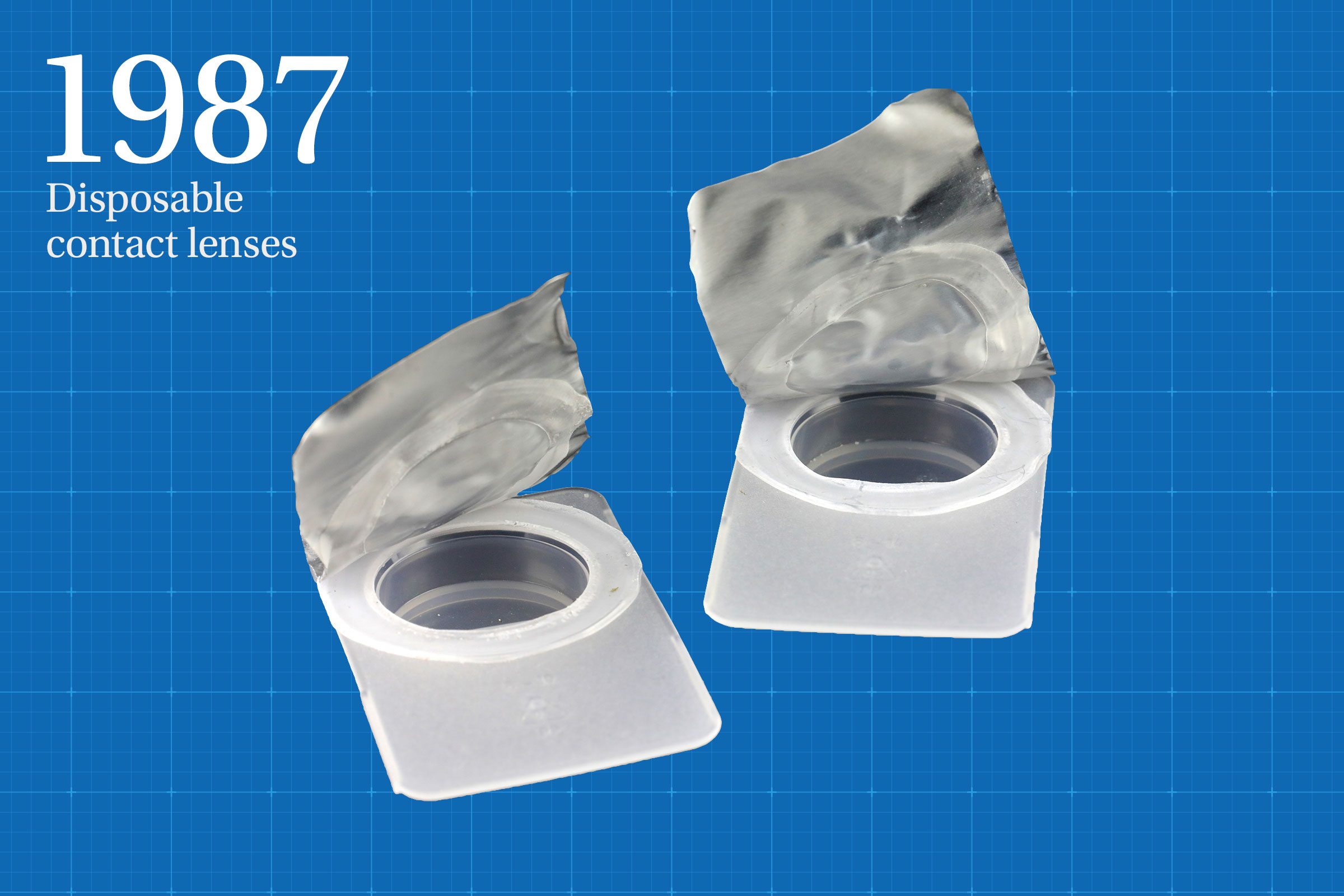
1987: Disposable contact lenses
Approximately 45 million Americans wear contact lenses, which means that 1987’s innovation gift—disposable contact lenses—is truly one for the masses. Plastic contacts had been around since 1936, but this modernized disposable variety from Acuvue really changed the game for those trying to correct their vision. Interesting facts from the CDC: Women account for two-thirds of the contact-wearing public, while the average age of the contact wearer is 31. Other firsts in 1987? The introduction of the World Solar Challenge, a solar-powered car race, according to CNET.
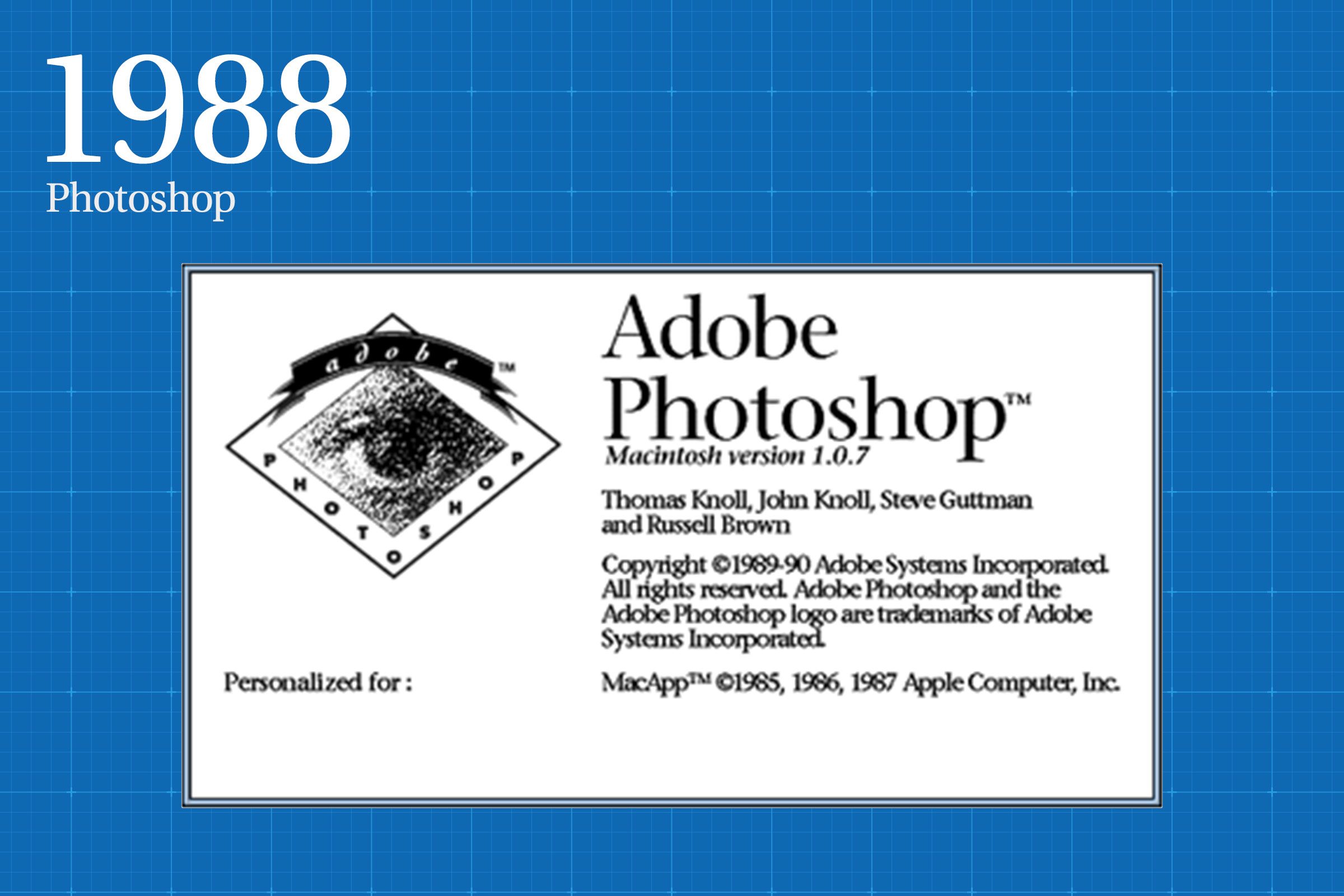
1988: Photoshop
A picture wasn’t just a picture after the world met Photoshop, which made its debut in 1988. From the mind of Thomas Knoll, who created the ImagePro version, the application was released by BarneyScan. Later, a licensing agreement with Adobe would come into play and Photoshop 1.0 was born, according to RS Components. Other introductions in 1988 include the antidepressant Prozac and Stephen Hawking’s book A Brief History of Time. Oh, and with so much innovation happening in the world of computers, it should come as no surprise that the first Internet-related computer virus sprang up this year as well. Did you know that Photoshop can fix closed eyes in photos?
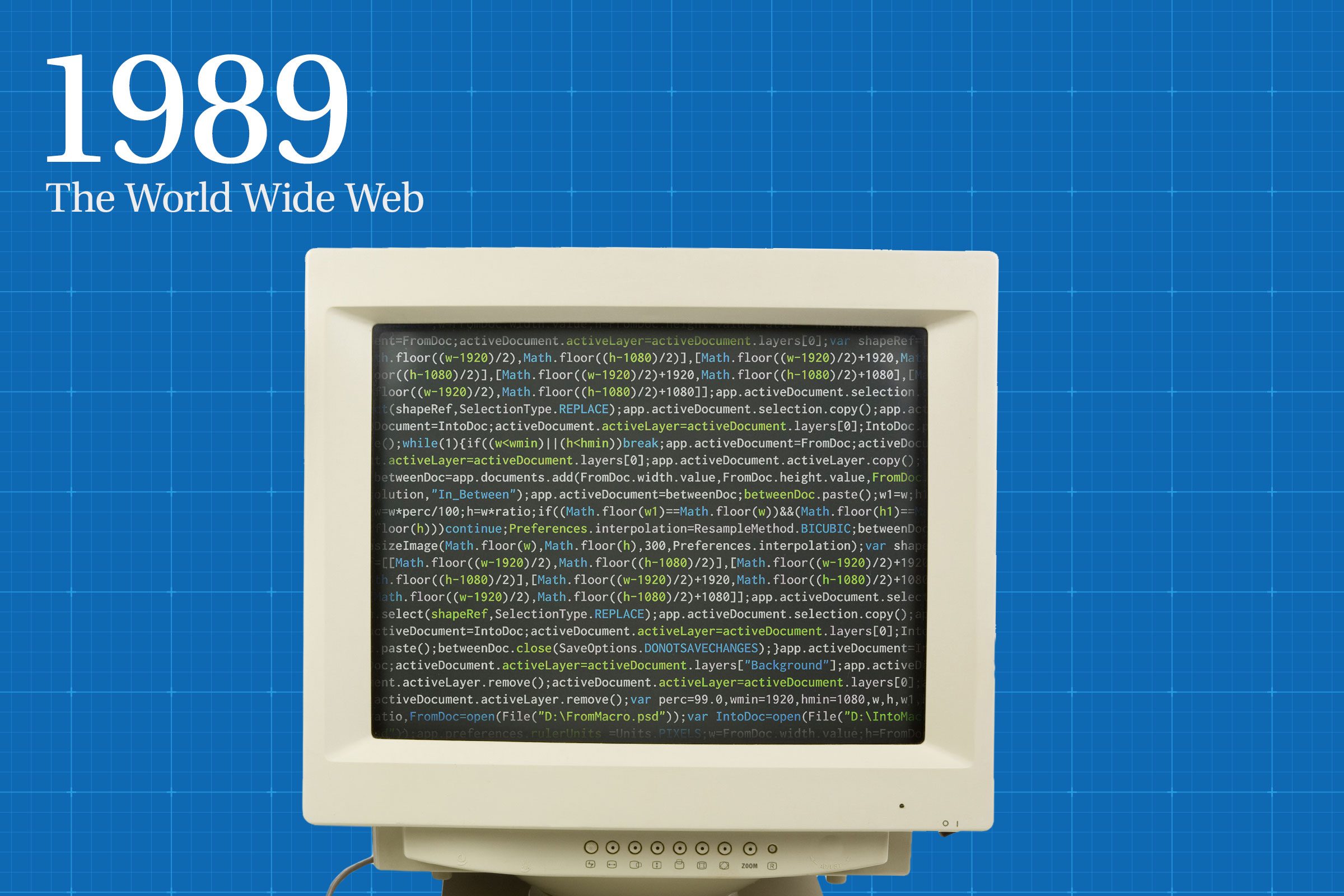
1989: The World Wide Web
It was a big year for the Internet with the creation of the World Wide Web. Sir Tim Berners-Lee is responsible for HTML (which stands for hypertext markup language) and URL (Uniform Resource Locator). Pretty cool, right? These inventions rightfully secured Berners-Lee on Time‘s list of the 100 Most Important People of the 20th Century, and in 2016, they earned him an A.M. Turing Award, according to the World Wide Web Foundation. In addition to the establishment of the World Wide Web, 1989 witnessed the introduction of the Game Boy and the demolition of the Berlin Wall.
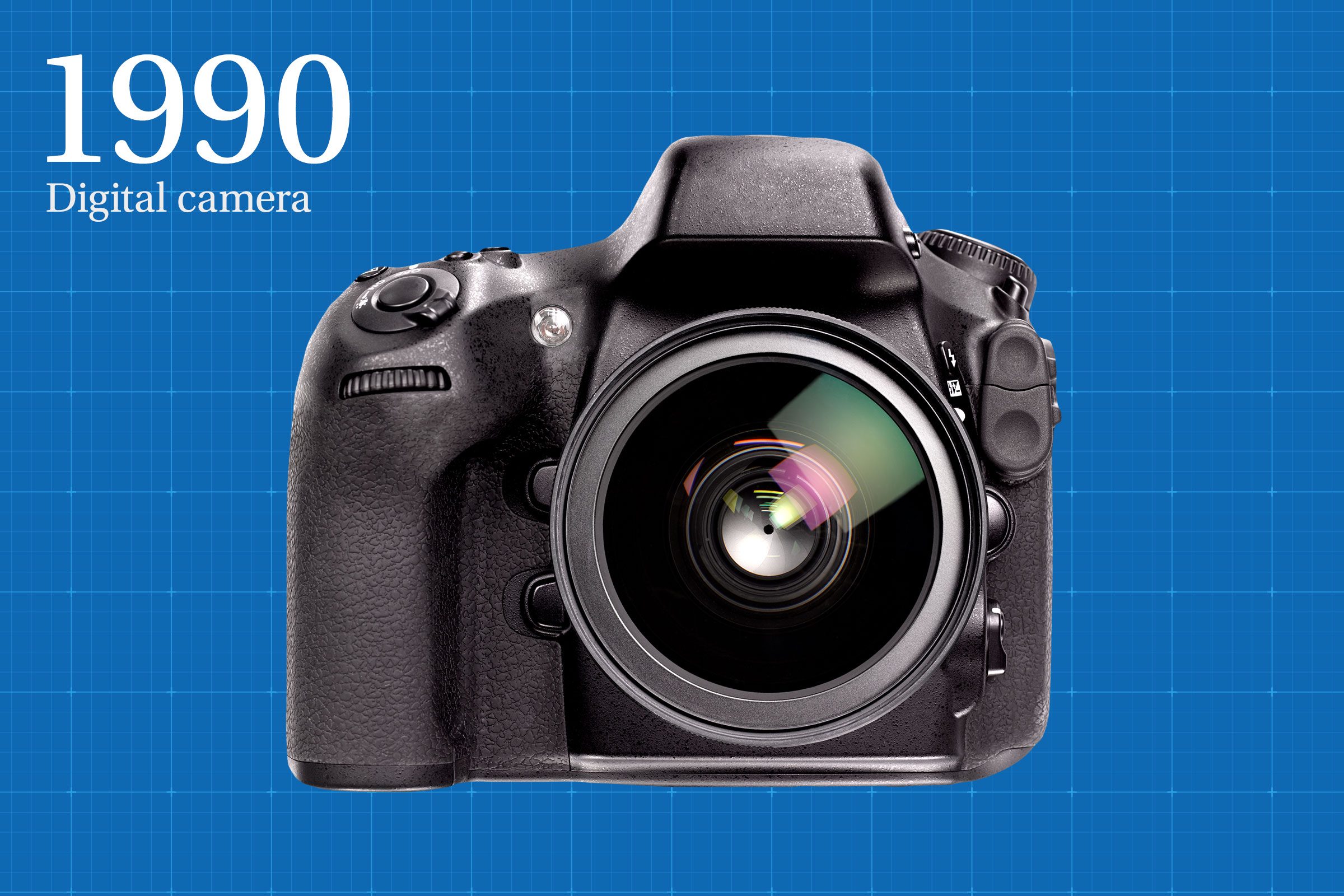
1990: Digital camera
Shutterbugs couldn’t wait to get their hands on a hot new product in 1990: the digital camera. According to RS Components, the Dycam Model 1 was an exciting invention at the time because it could store your photos digitally (look, ma, no film!) and connect straight to a PC for transfer of downloadable files. The digital camera enjoyed its heyday until smartphones, with their ever-evolving technology, took the place of pocket-sized digital cameras for everyday use. Recently, a man named Steven Sasson, who worked for Kodak during the 1970s, said he developed a digital camera for the company, but they didn’t want to bring it to the market over fears that it would kill camera film sales, according to Business Insider.
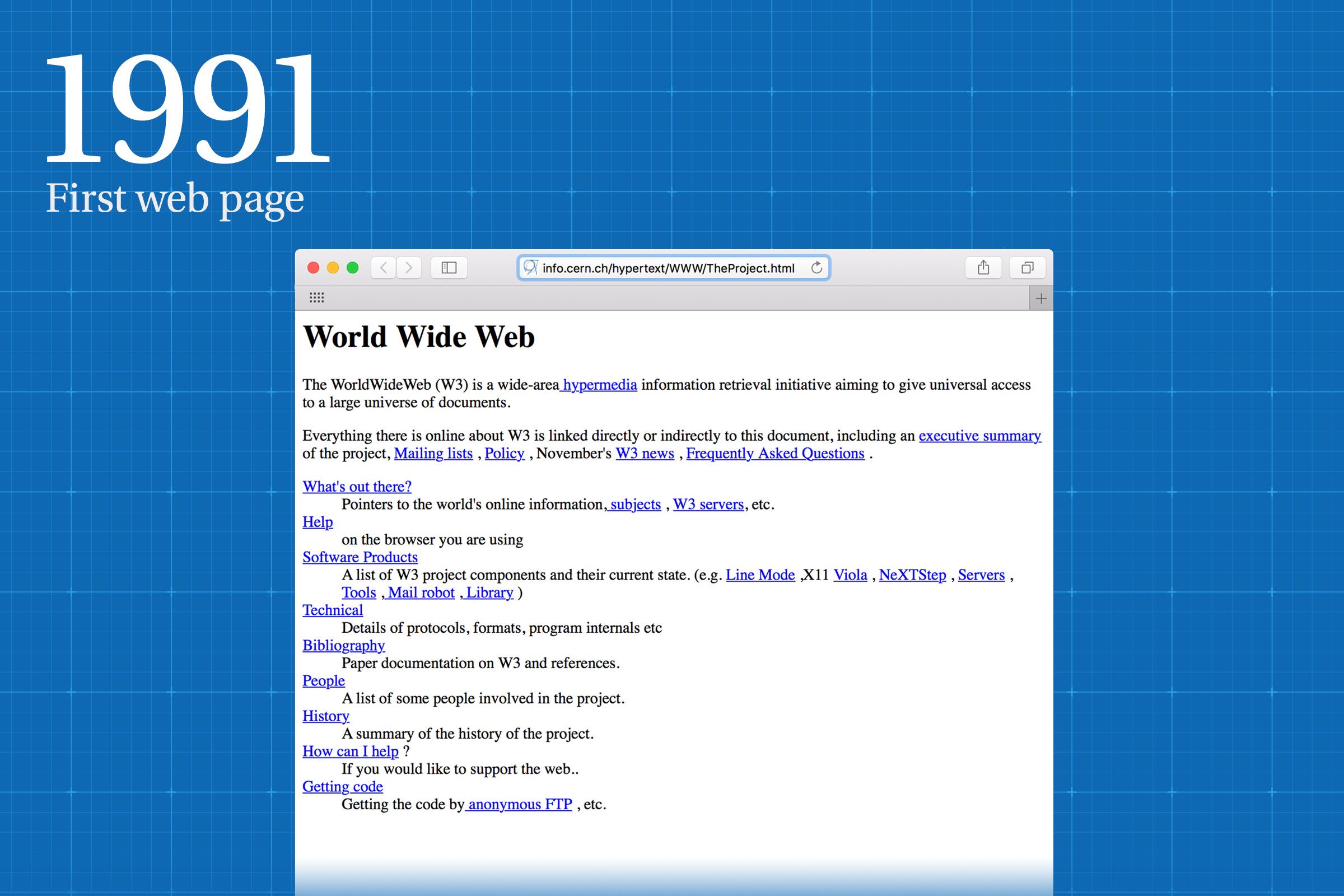
1991: The first web page
Let’s circle back to our friend Sir Tim Berners-Lee, who brought us the World Wide Web two years earlier in 1989. Far from finished with his work, he created the very first web page in 1991. According to History.com, it was basically just instructions for how to use the web. He didn’t want to patent his invention because his hope all along was that the web would be accessible and free for everyone. He’s quoted as saying, “Had the technology been proprietary, and in my total control, it would probably not have taken off. You can’t propose that something be a universal space and at the same time keep control of it.”

1992: Texting
If you were born in 1992, you’ve never lived in a world without texts, even if the very early ones were more primitive than the high-speed communication we’re used to now, complete with emojis and whatnot. A Sema Group Telecoms developer named Neil Papworth directed the very first text message ever to Richard Jarvis, who was the director of Vodafone at the time. Not to be nosy, but if you’re as curious as to what that message was as we were, it simply said, “Merry Christmas.” The text was actually sent from a personal computer to a phone, according to RS Components. In case you were wondering, here’s how to send an anonymous text.
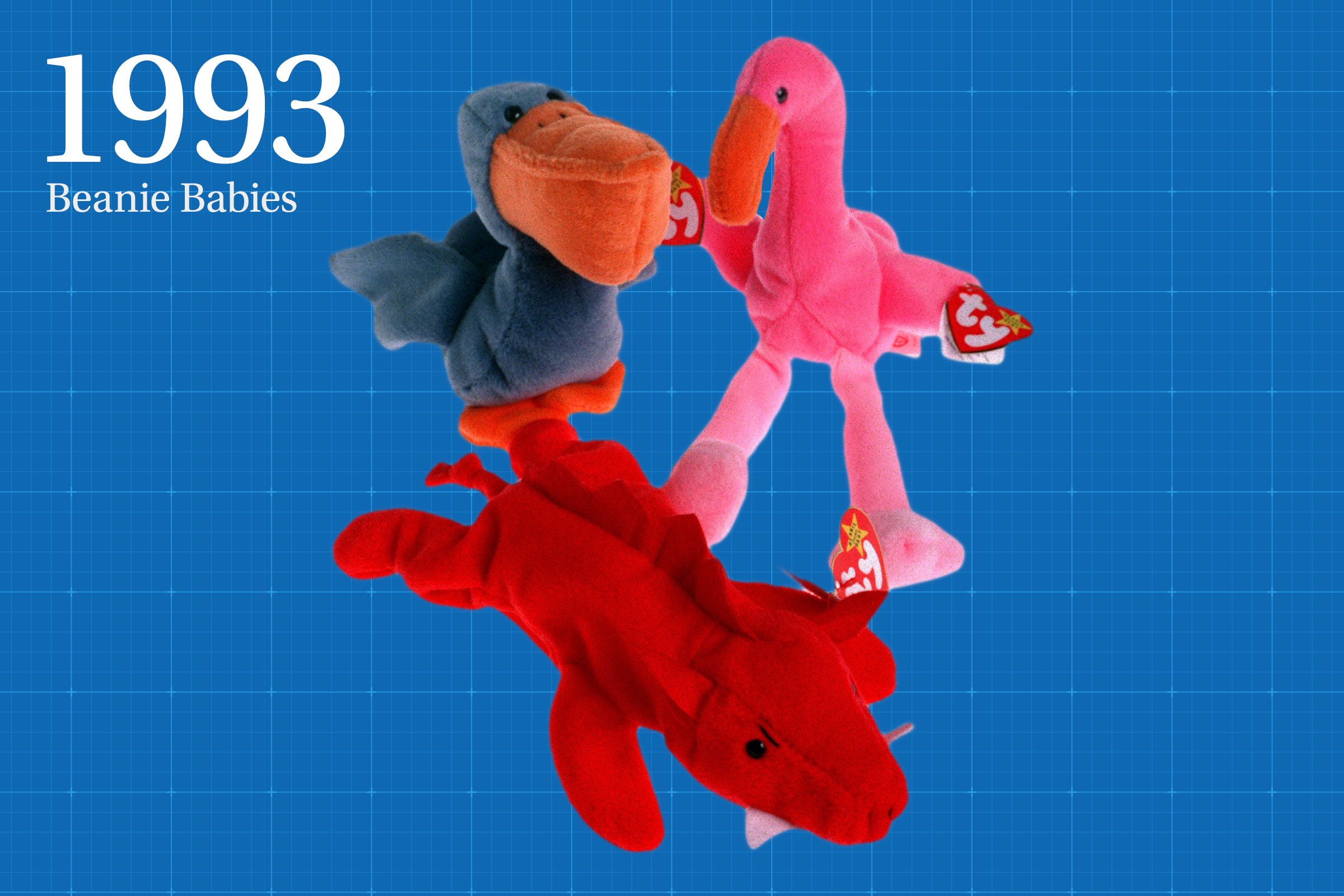
1993: Beanie Babies
Collectors of all things cute couldn’t get enough of Beanie Babies, which made their debut in 1993. Distributed by Ty, Inc., there were nine animals in the original collection, including a moose named Chocolate and a lobster named Pinchers. People went crazy snapping up these cuddly creations, knowing that Ty would retire them nearly as soon as they were released. According to the New York Post, the company achieved $1.4 billion in sales of Beanie Babies in 1998 alone, just five years after their introduction to the world.
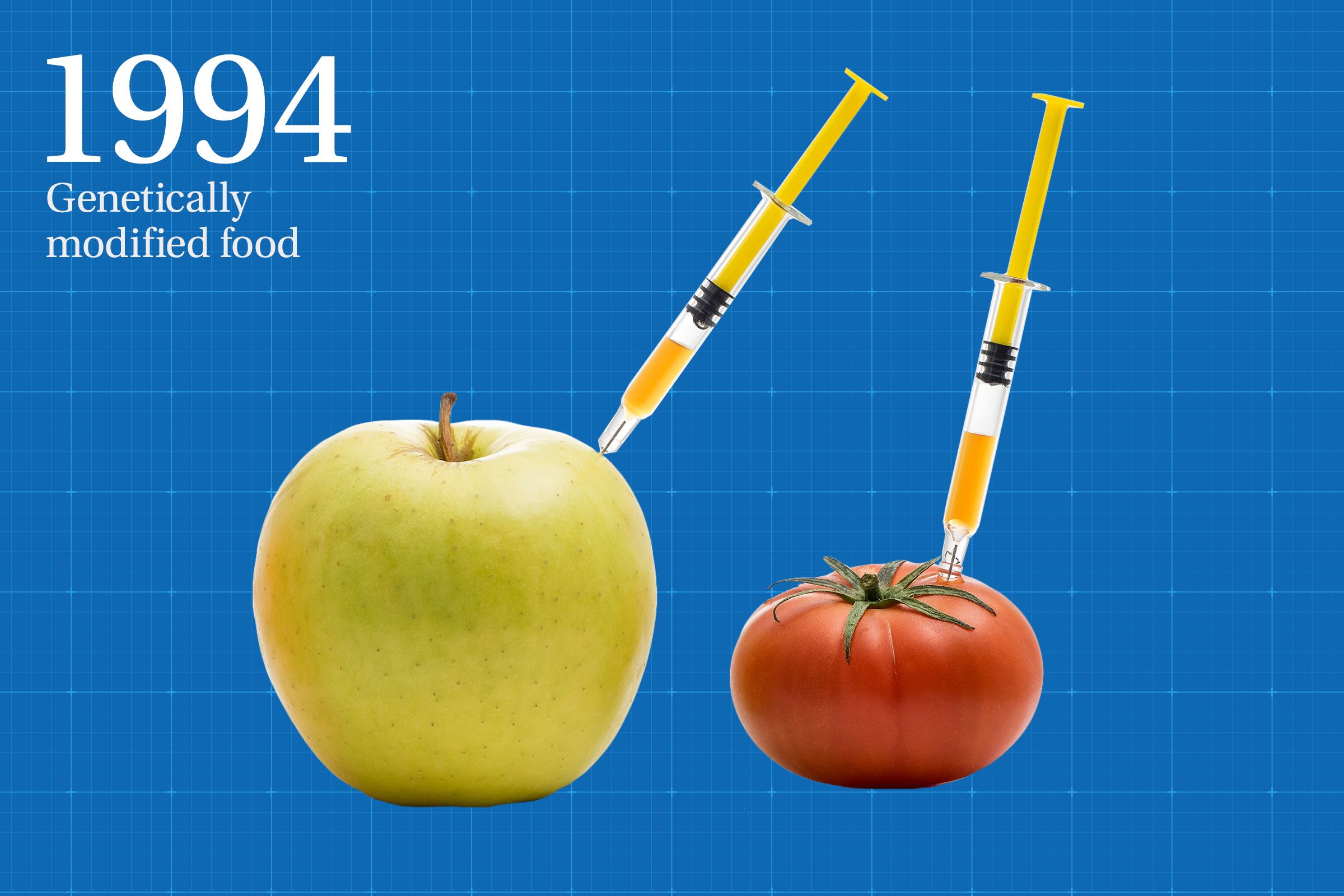
1994: Genetically modified food
Today, many packaged foods proudly proclaim they don’t contain any GMOs (Genetically Modified Organisms), but in 1994, a company called Calgene was pretty darn excited to introduce the very first genetically modified food to the consumer market. Their offering? A tomato called the Flavr Savr. According to the University of California’s Department of Agriculture and Natural Resources, though the product was popular, it never reaped profits for Calgene because the production cost was simply too high. Because of this, the Flavr Savr tomato wasn’t long for this world and is no longer available for purchase. Some ideas are better left as ideas, and in fact, these 7 inventors regretted their inventions.
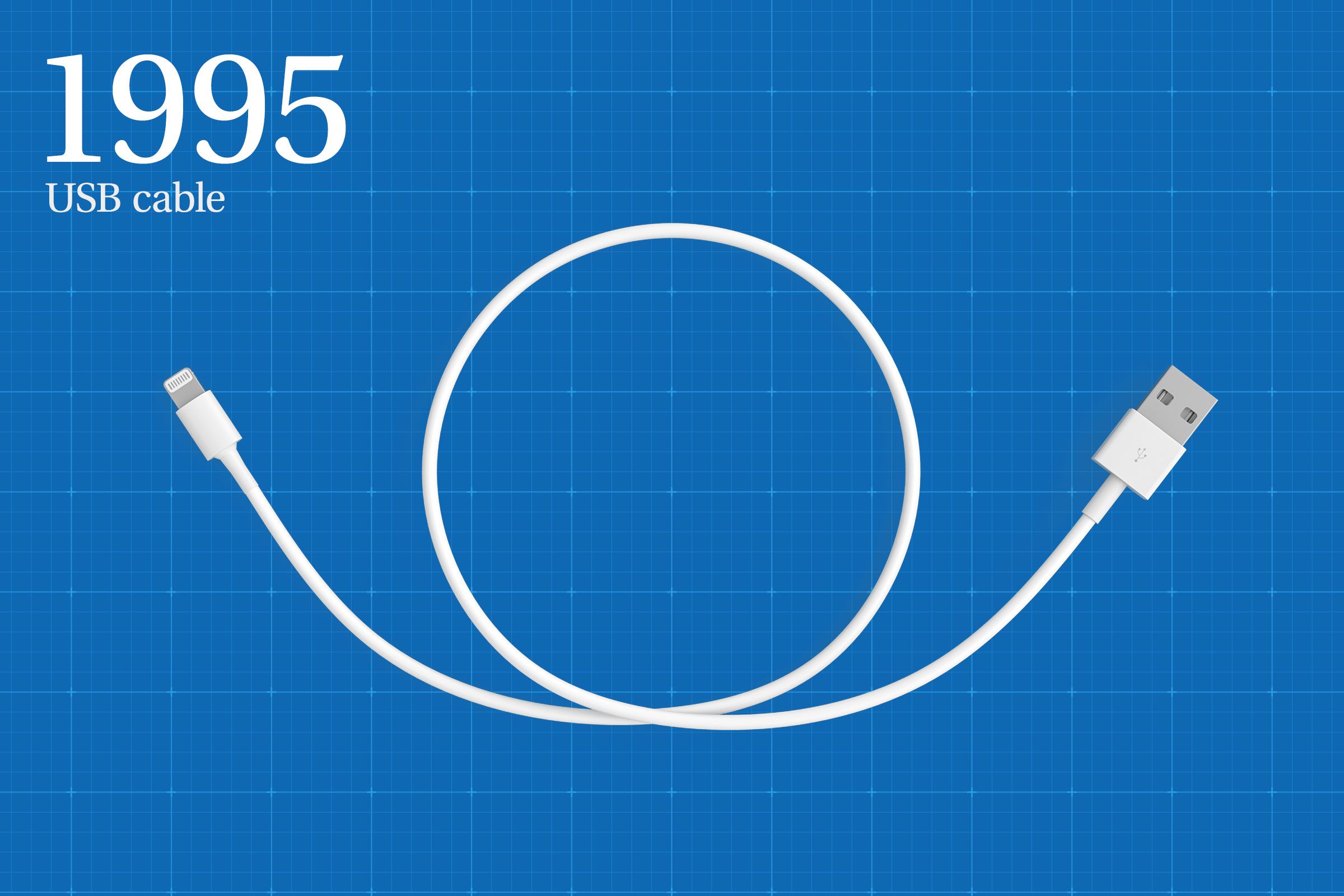
1995: USB cable
The USB cable is like a lifeline for our technology, connecting our devices to one another and to power. But it didn’t exist prior to 1995, the year that Intel introduced the Universal Serial Bus to the world. The oh-so-important cord was created by Ajay Bhatt, Intel’s Chief Systems Technologist, and USB technology is now used in more than 10 billion devices all over the world. That’s a lot of connections! But if you’ve ever struggled to smoothly insert a USB connection into your device, you aren’t alone. NPR reports that even Bhatt knows it can be frustrating. However, when deciding what shape to make the connector, Bhatt and his team felt that a rectangular shape was still better and easier to use than a round connection.
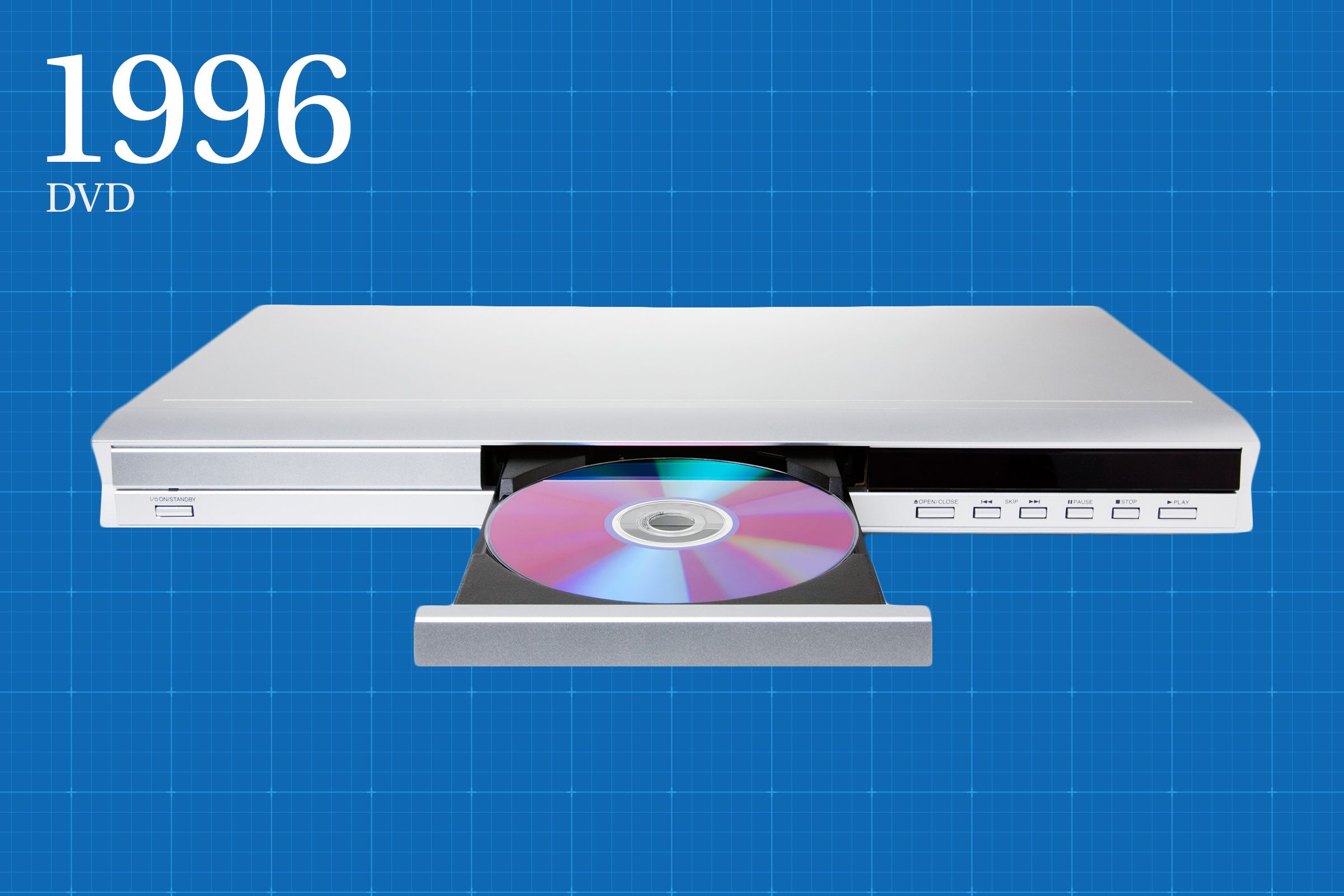
1996: DVD
Movie lovers will appreciate this one: the introduction of the DVD in 1996. Finally, there was a smoother, more compact way to view movies, TV shows, and other media. RS Components says that there isn’t a single person who says they invented the DVD, but electronics brand Toshiba did commercialize the first DVD player. Prior to DVDs, we used VHS cassette tapes for movie viewing, and there was also the short-lived LaserDisc (which basically looked like a giant DVD about the size of a vinyl record).

1997: Hybrid car
Vroom, vroom! In 1997, Toyota’s first hybrid car, the Prius, rolled into Japan. Car and Driver describes a hybrid vehicle as one that combines an electric motor with a gasoline engine, meaning that less gas is expended and the car can achieve far better fuel economy. Translation: Since the electric power and gasoline power trade off, you can really stretch a tank of gas. The United States wouldn’t see the Prius on its shores until 2000. While this invention certainly has its benefits, there is one big problem with hybrid cars that no one is talking about.
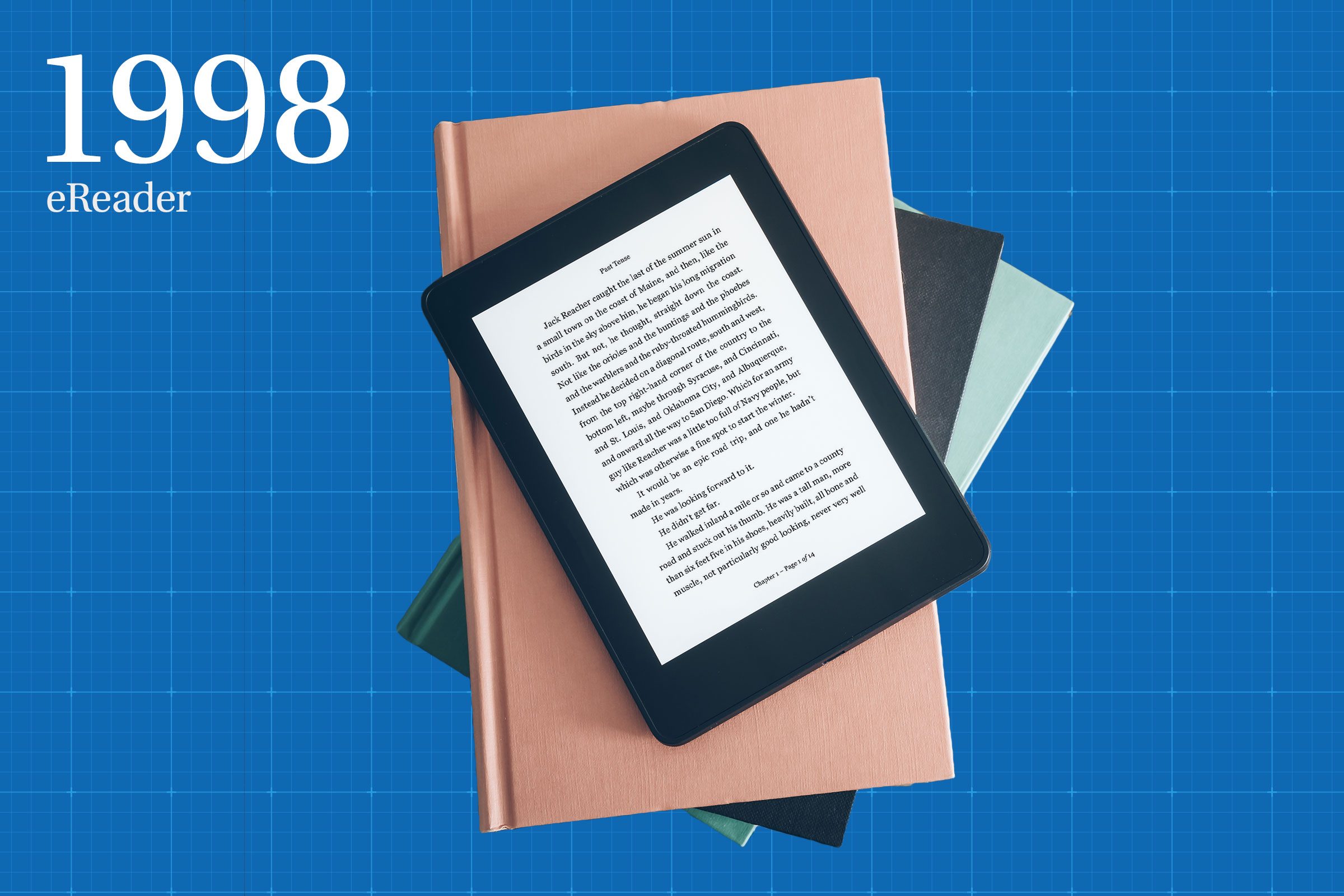
1998: eReader
While we still love the look, feel, and even smell of printed books, the first eReader made its debut in 1998. Contrary to what you might think, it was not Amazon’s Kindle but rather devices known as the SoftBook and the Rocket eBook. The Rocket eBook set folks back $500 for the device back in 1998, according to CNN Money, and weighed just over a pound. It could hold an estimated 4,000 pages worth of material. The SoftBook cost around $500 and could hold more than double the number of pages as the Rocket eBook. Neither one was a commercial success, and both devices fizzled rather quickly. These are the best eReaders worth buying now.
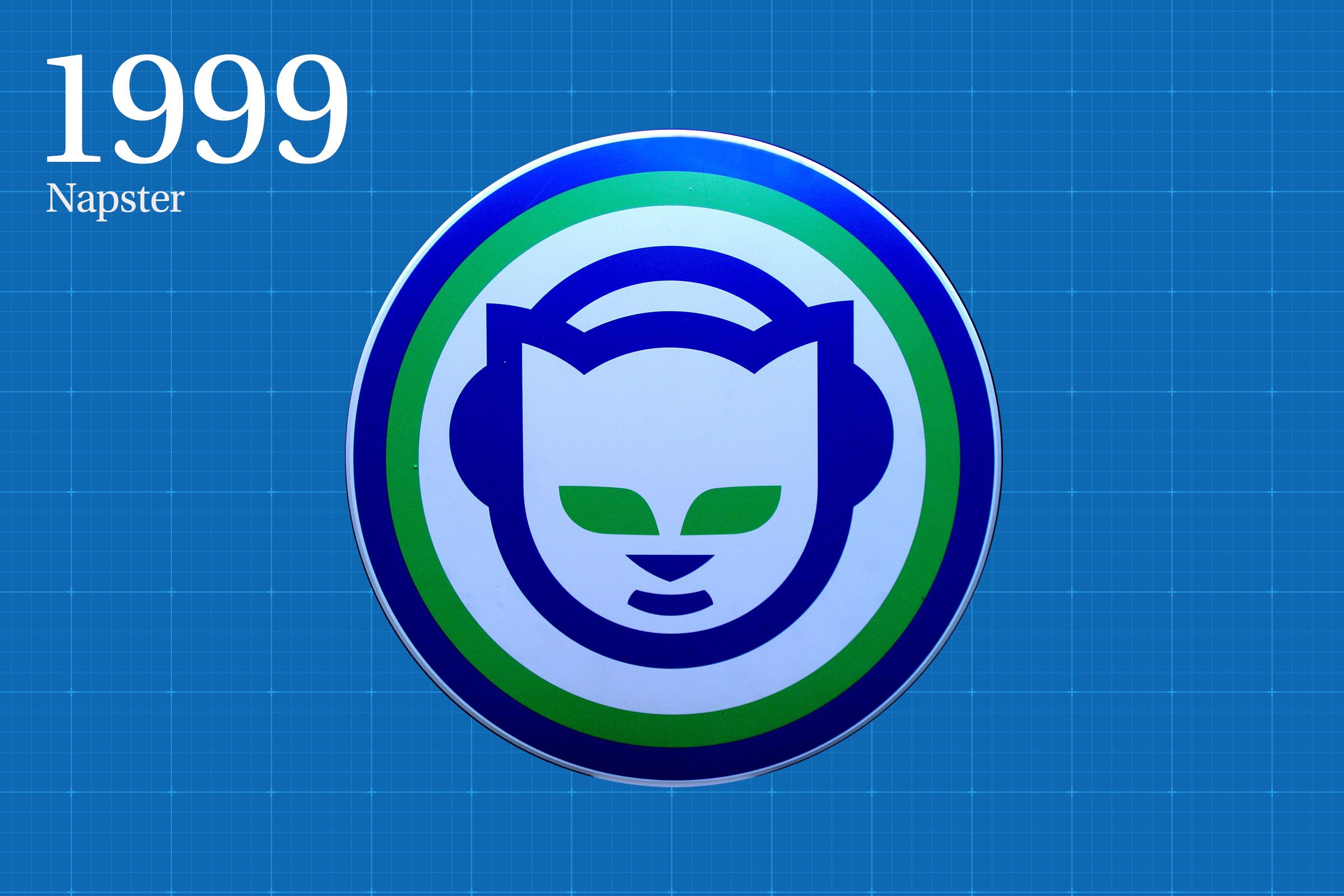
1999: Napster
If you were tech-savvy back in 1999 and a music lover, then Napster was your jam. The platform came on the scene in 1999 as the brainchild of developers Sean Parker and Shawn Fanning. Through Napster, you could share music with friends and strangers alike. The only problem was that it was kinda, sorta, totally illegal because it infringed on licensing issues with musicians whose music was being swapped for free. In 2001, Napster was forced to close but attempted a comeback in the form of a paid music streaming subscription service.
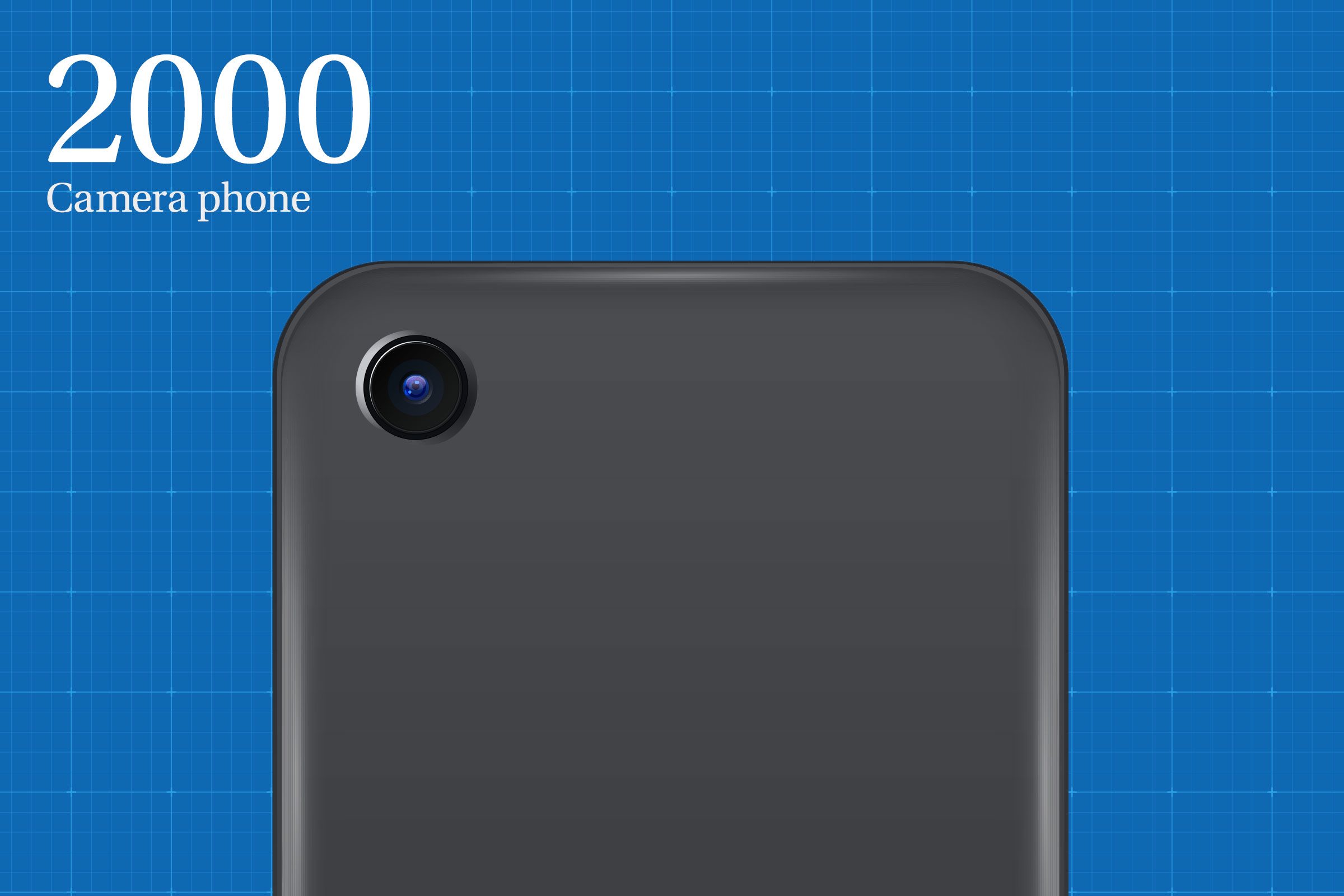
2000: Camera phone
If you were born in the year 2000, you’ve never known life without a camera phone. The first of these debuted in South Korea and were manufactured by Samsung. You could only take 20 photos with it and the resolution was, quite simply, terrible. It pales in comparison to the impressive images one can take on a modern-day iPhone (even if you’re a generation or three behind). Later in 2000, Sharp manufactured a similar device that was marketed by a company called J-Phone, according to Digital Trends. Again, the resolution wasn’t great, but it was the start of a beautiful relationship between the mobile phone and an accessible camera. Next, find out the most famous invention from every state.
Source:
- RS Components: “What Was Invented the Year You Were Born?”